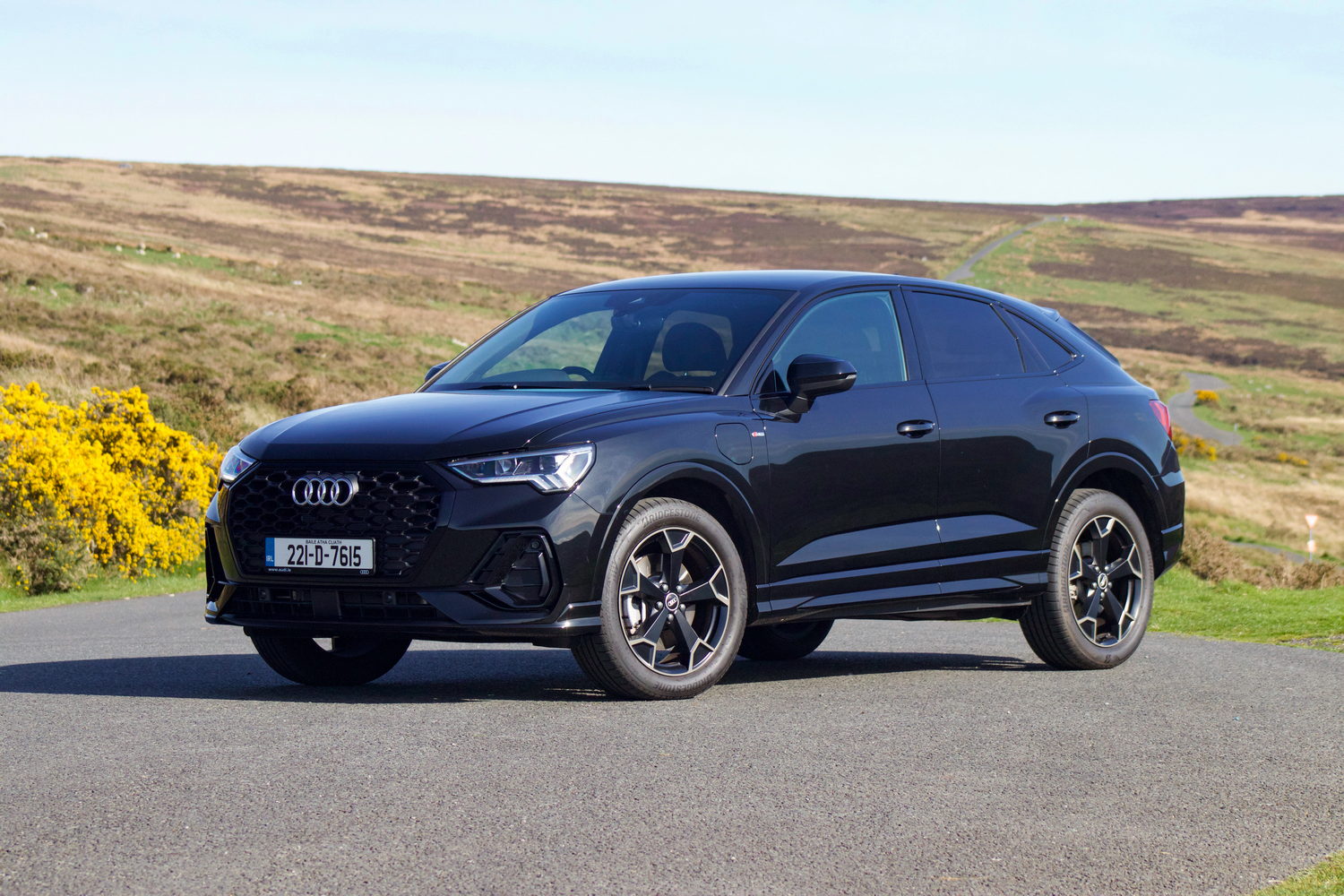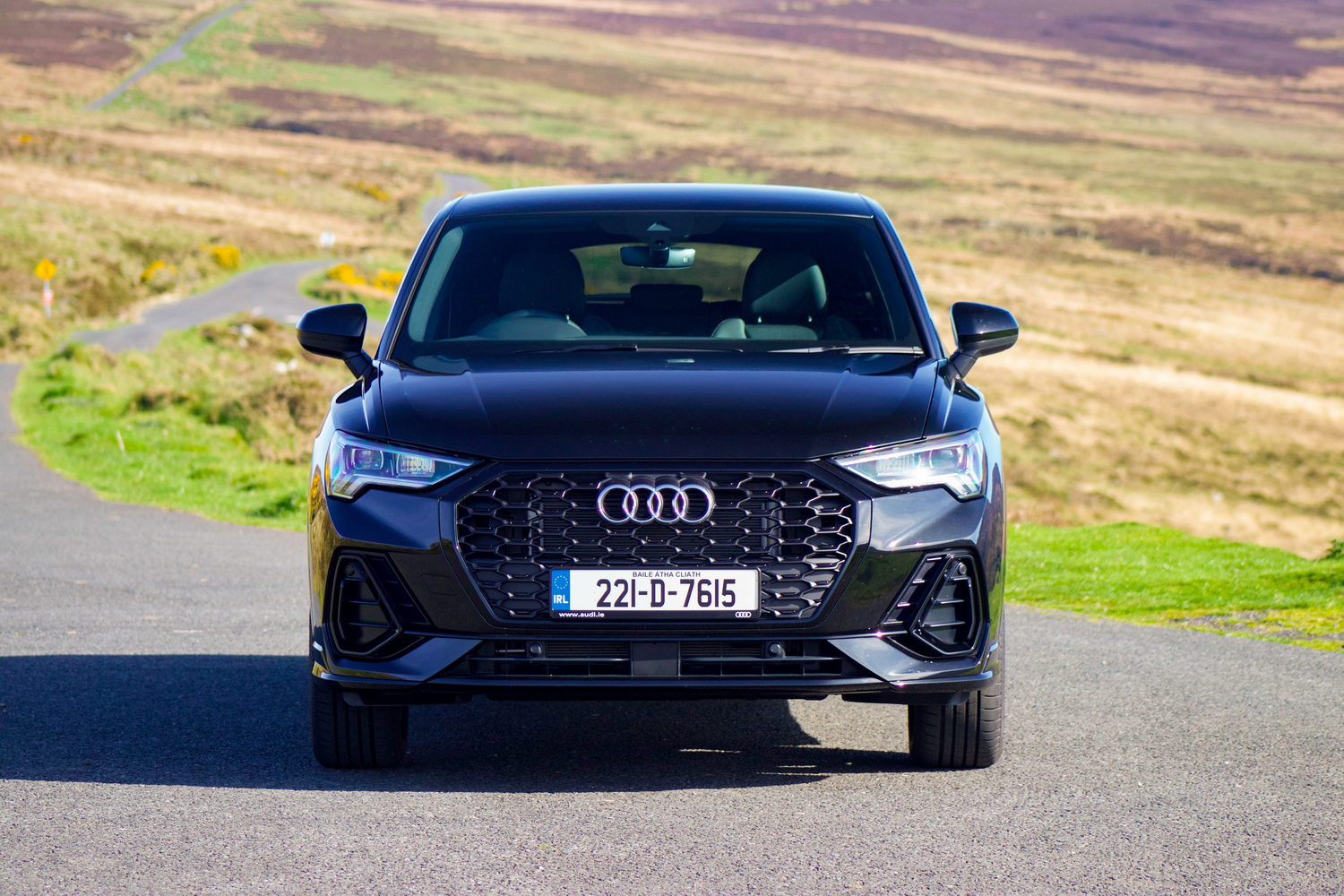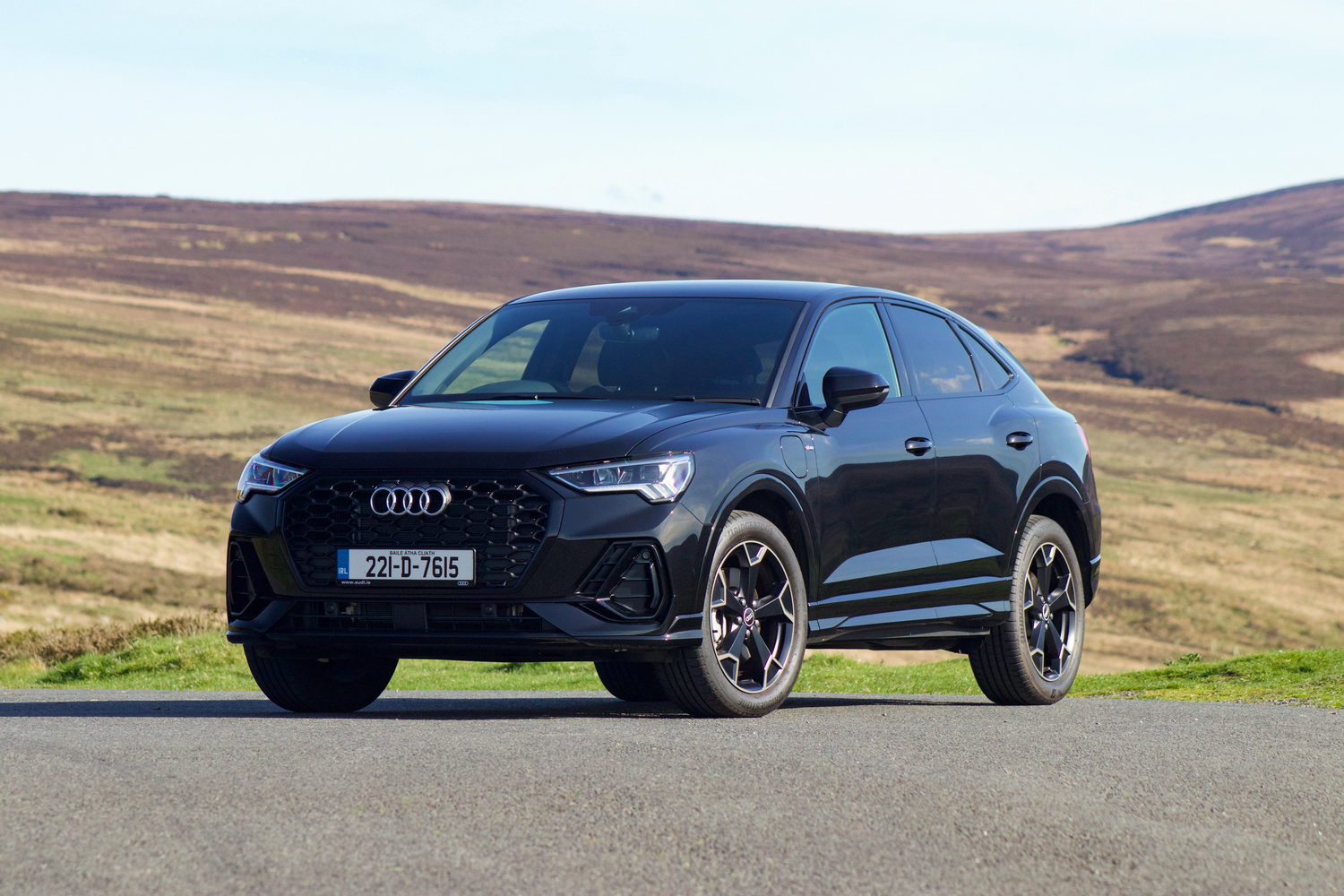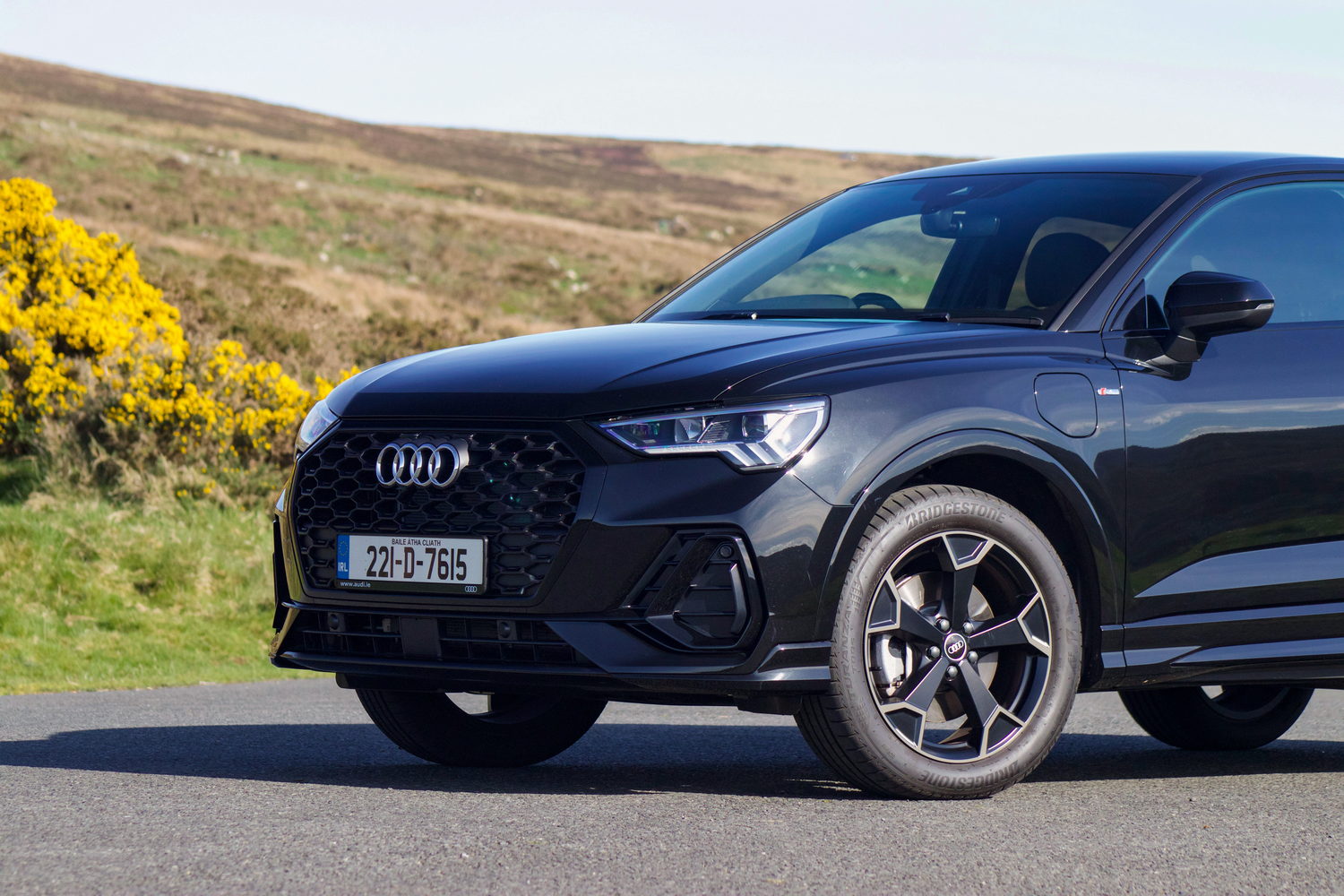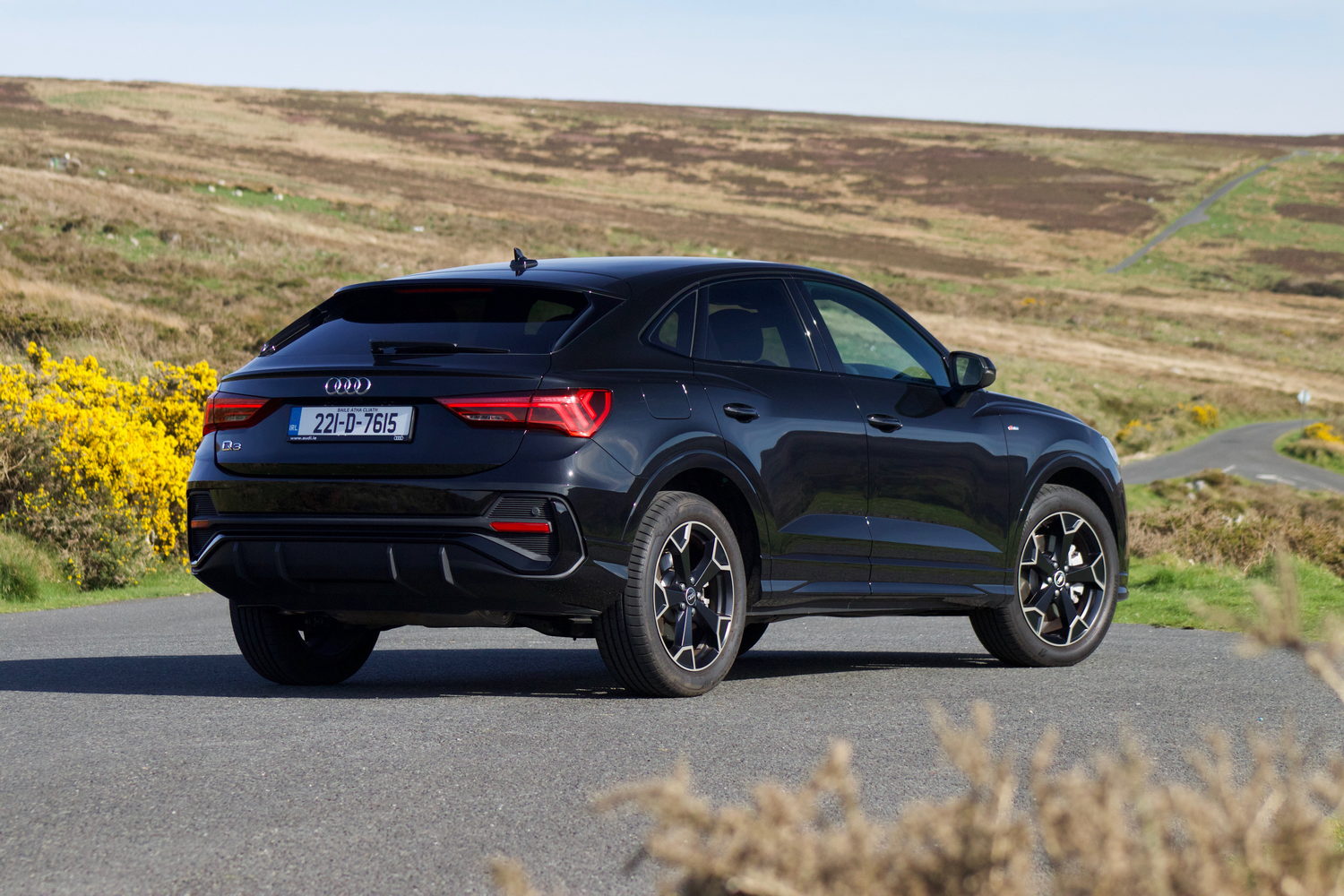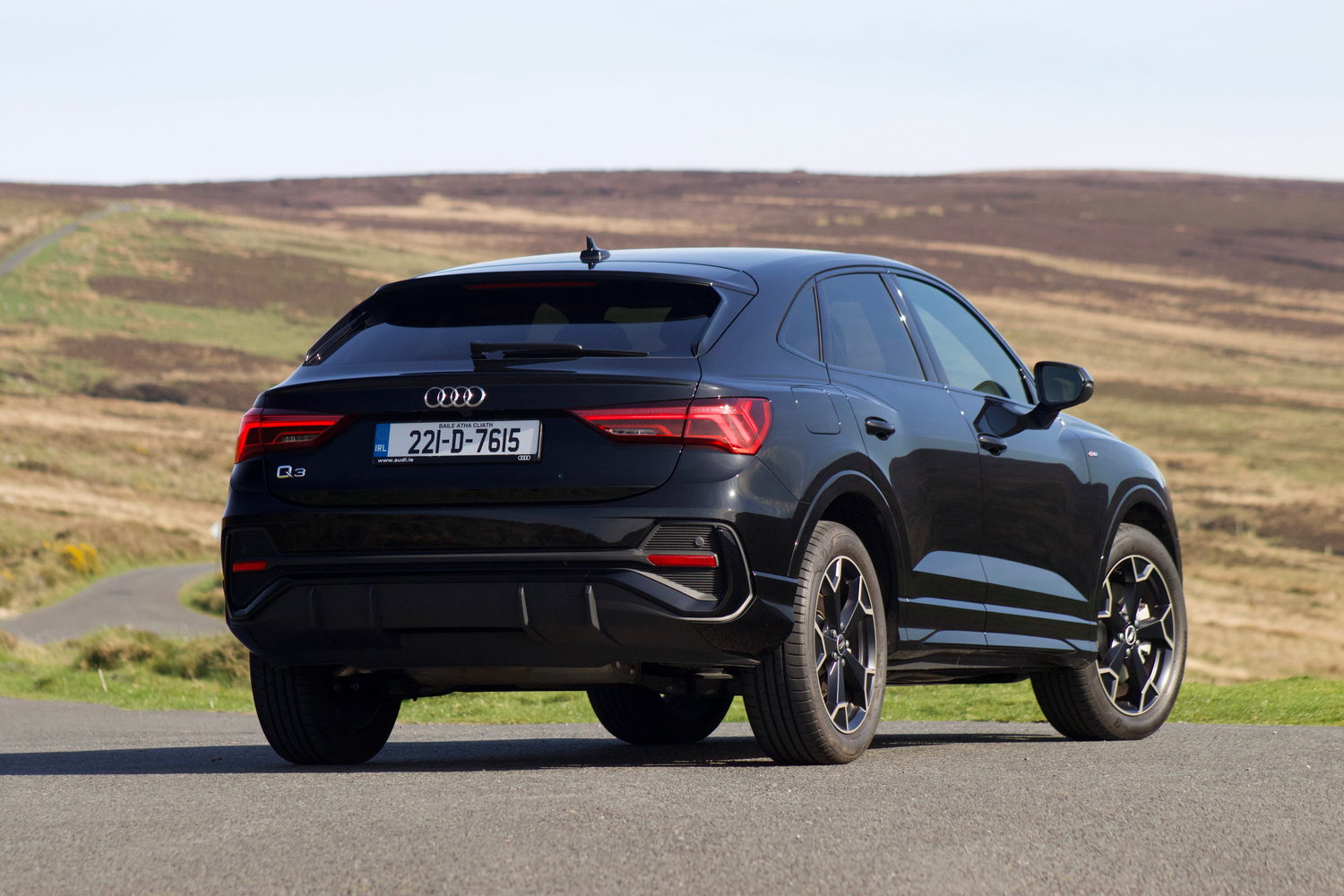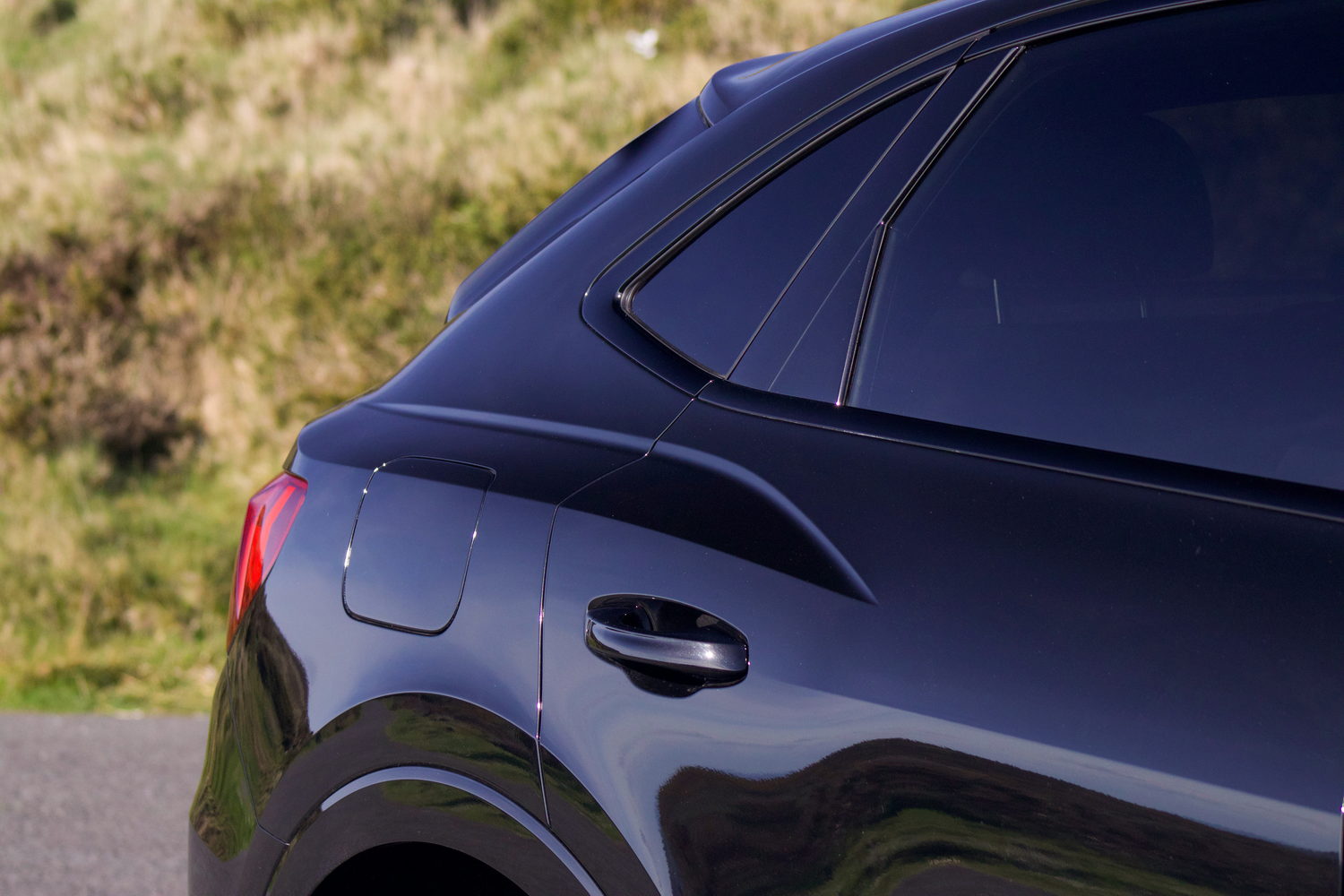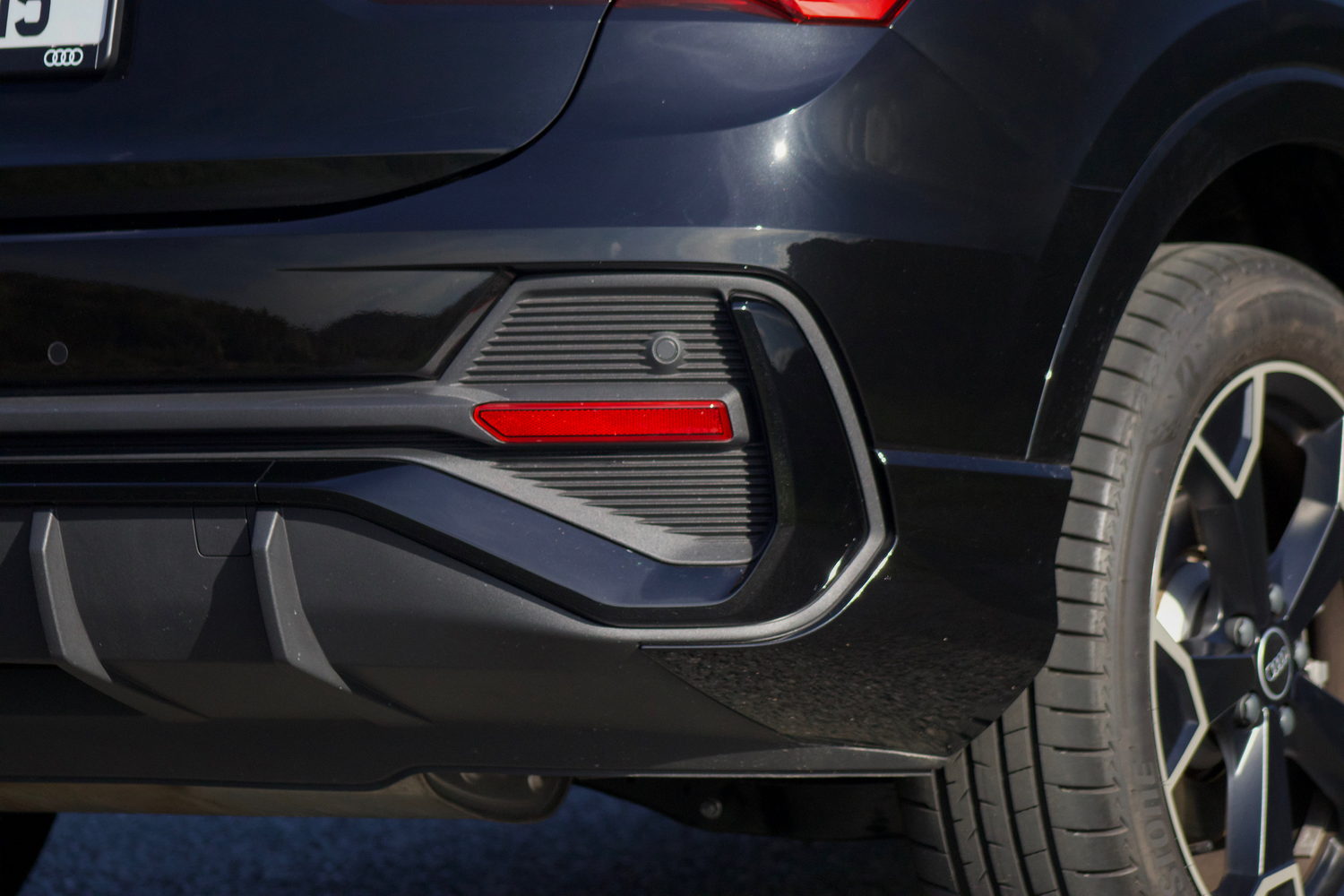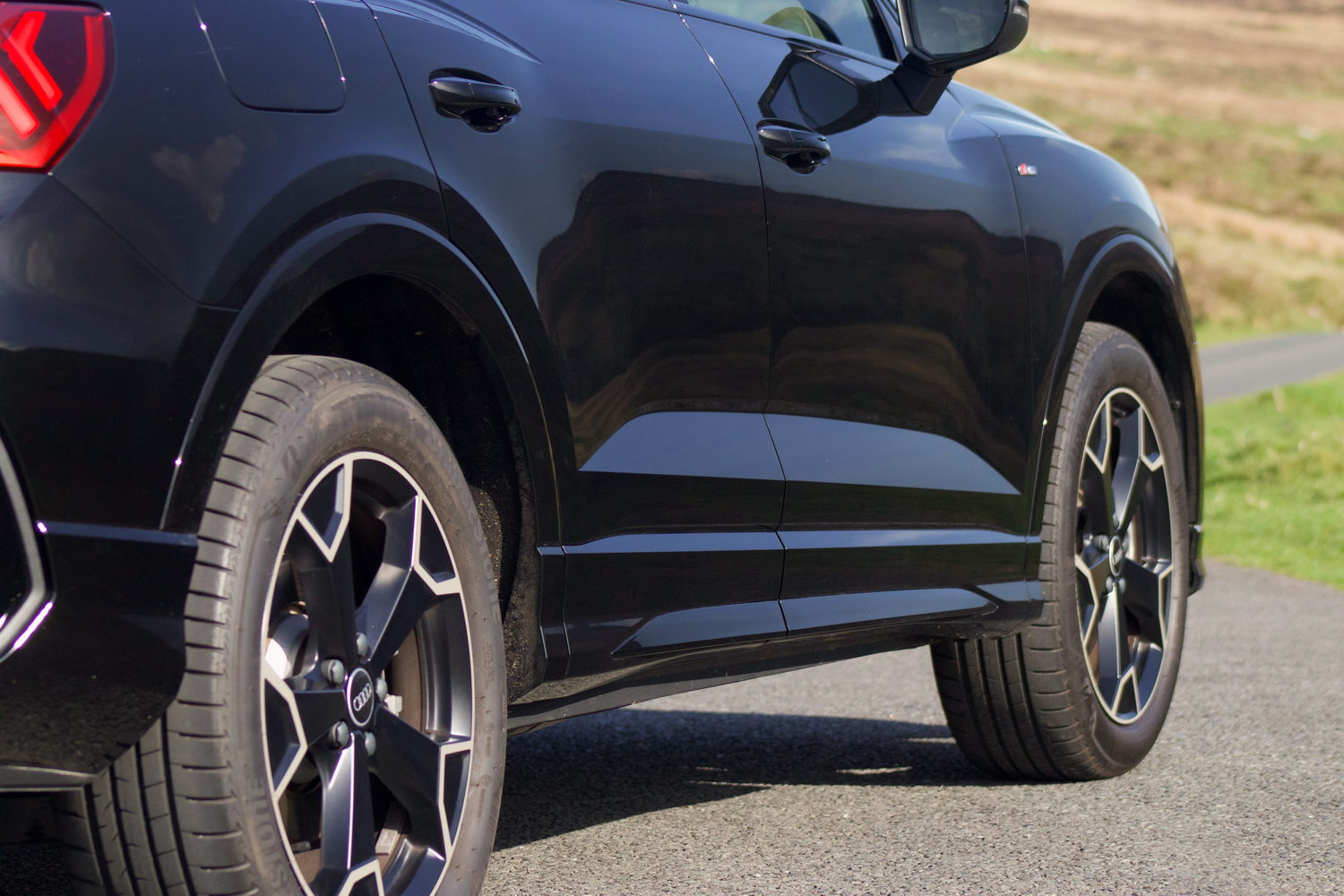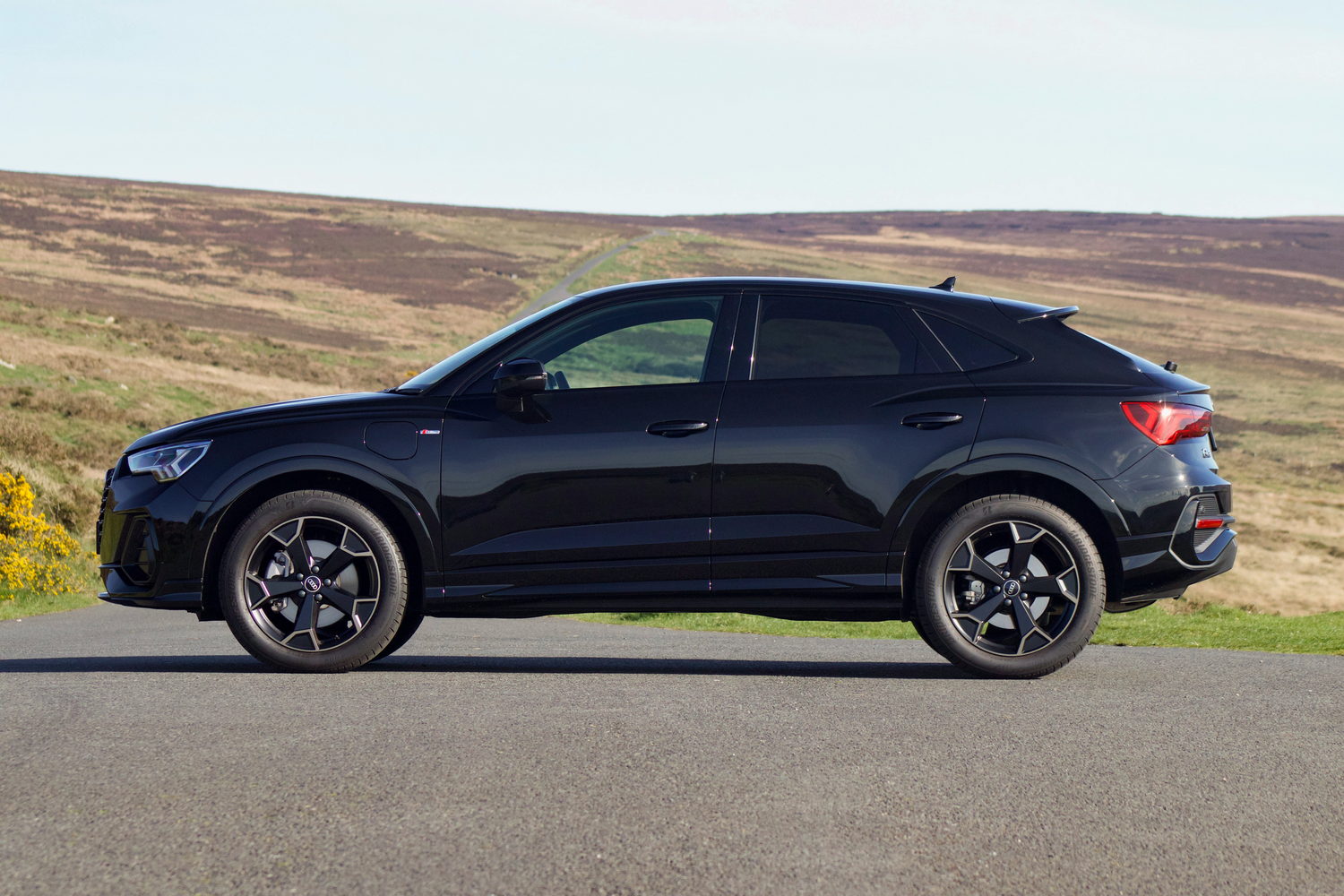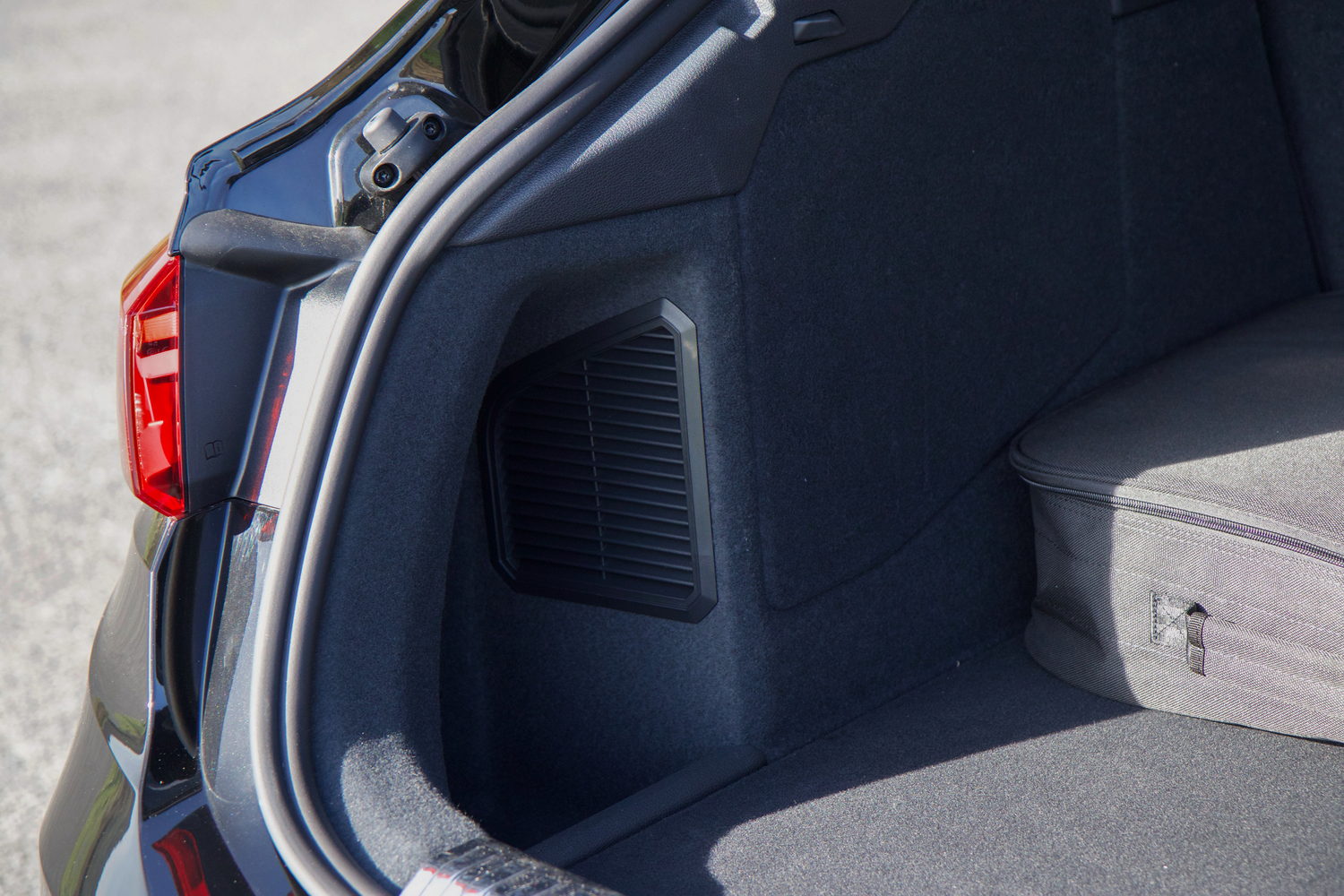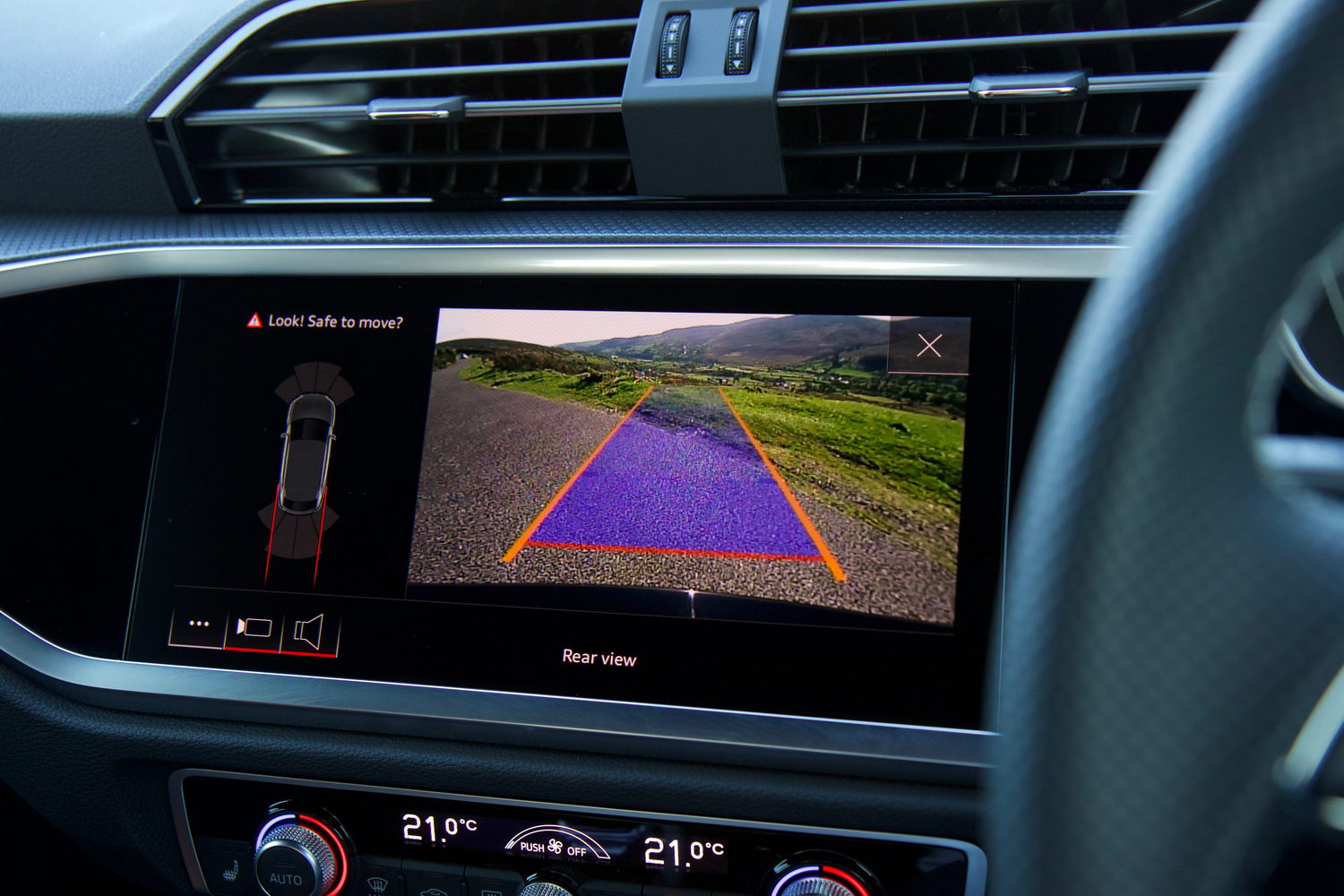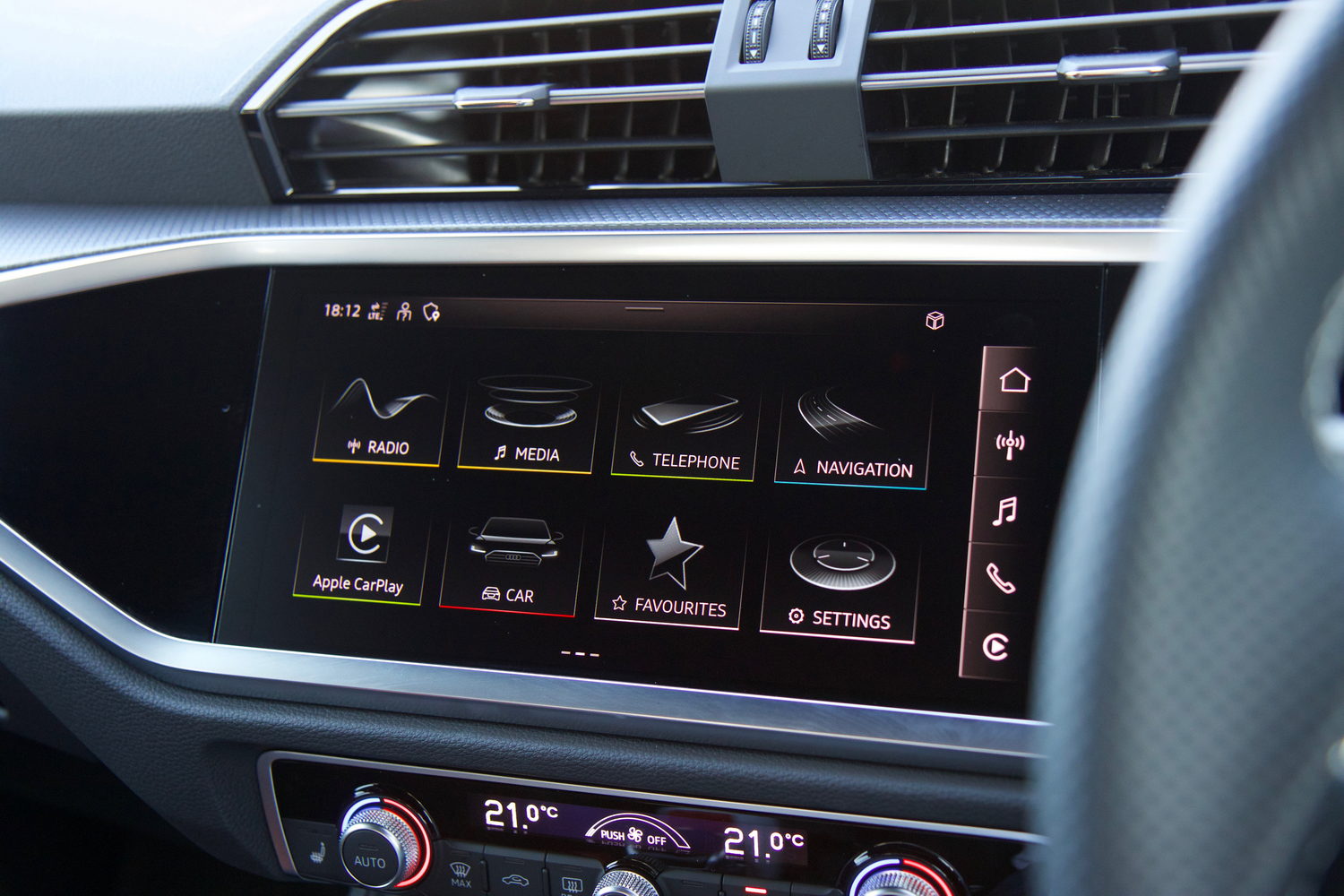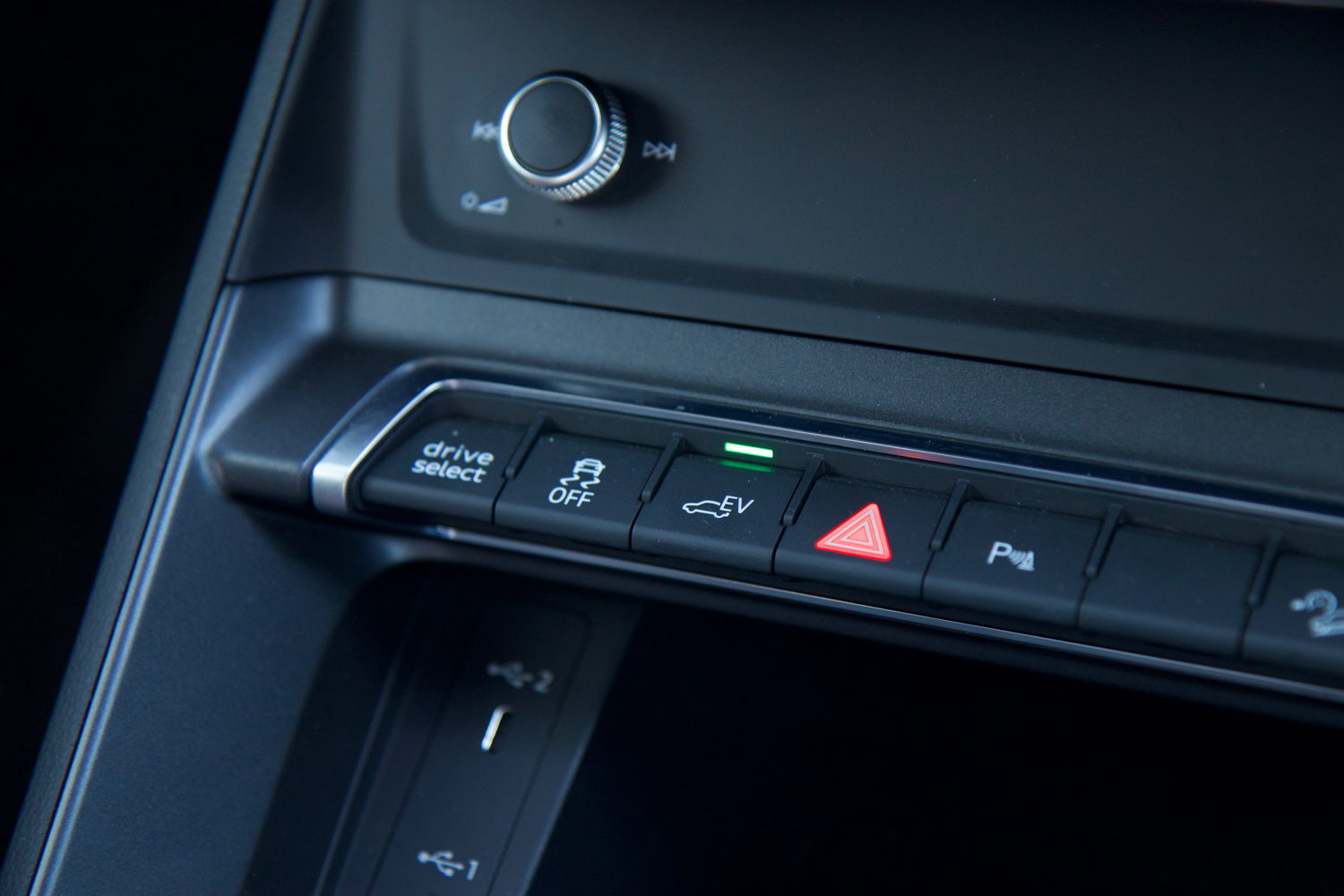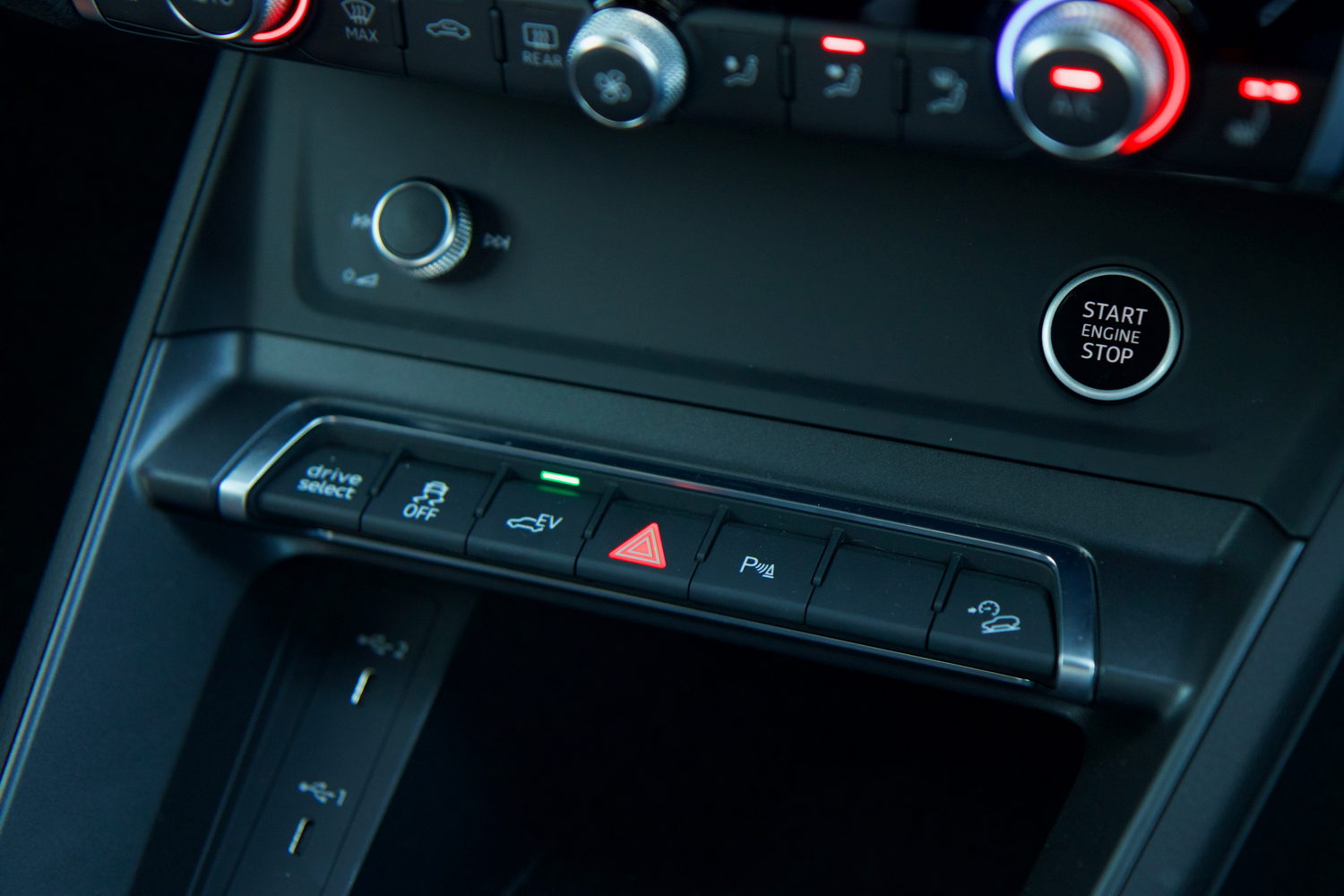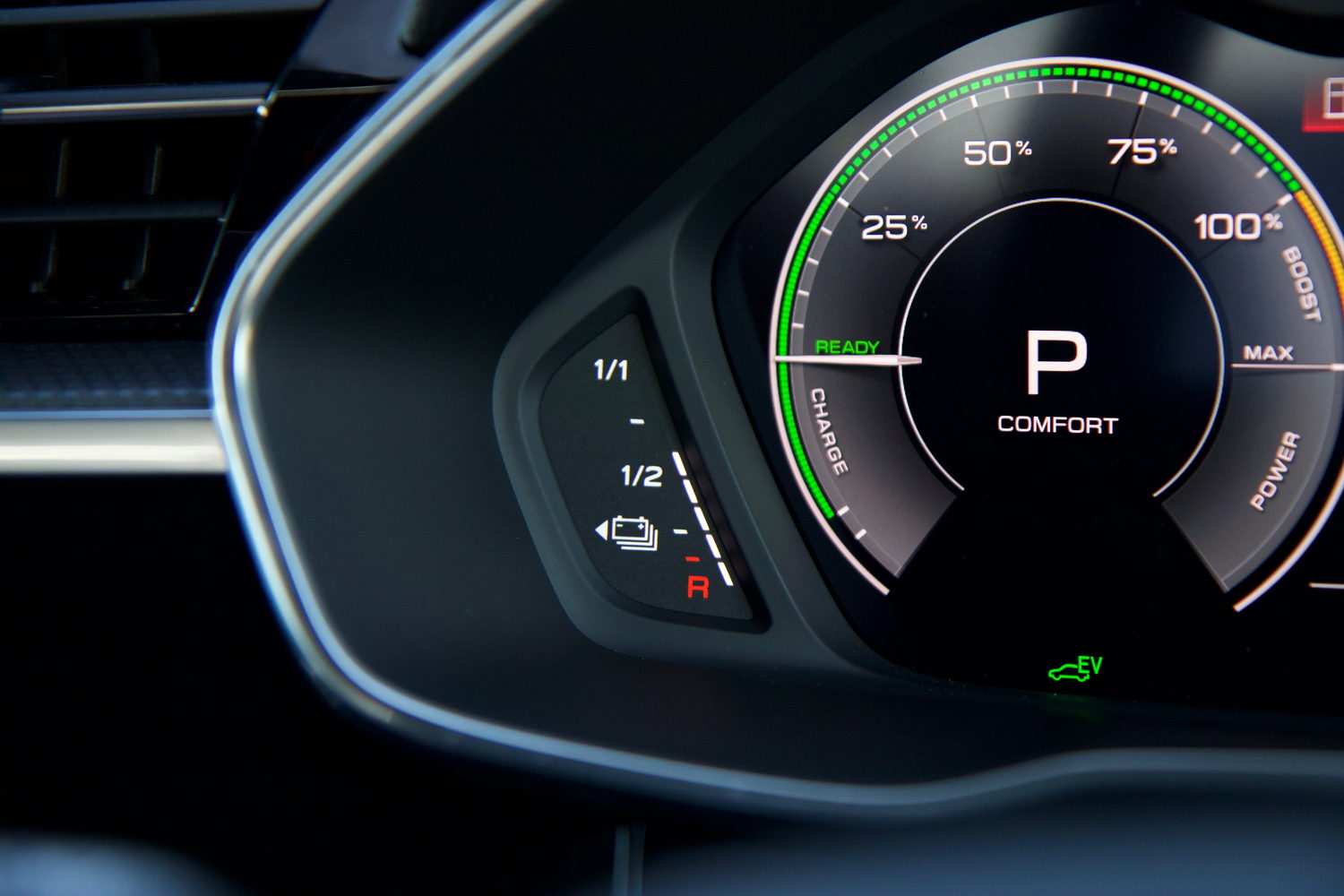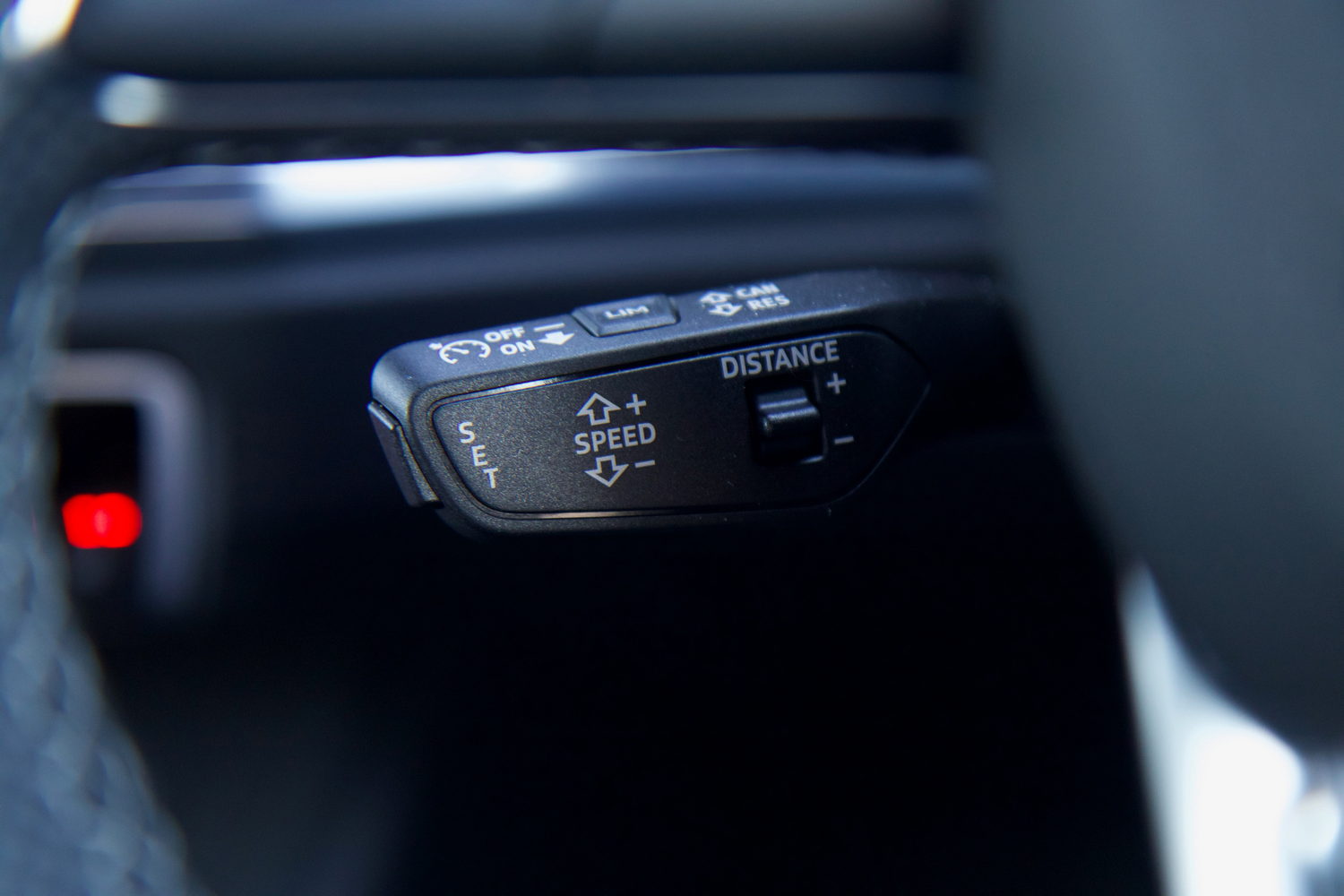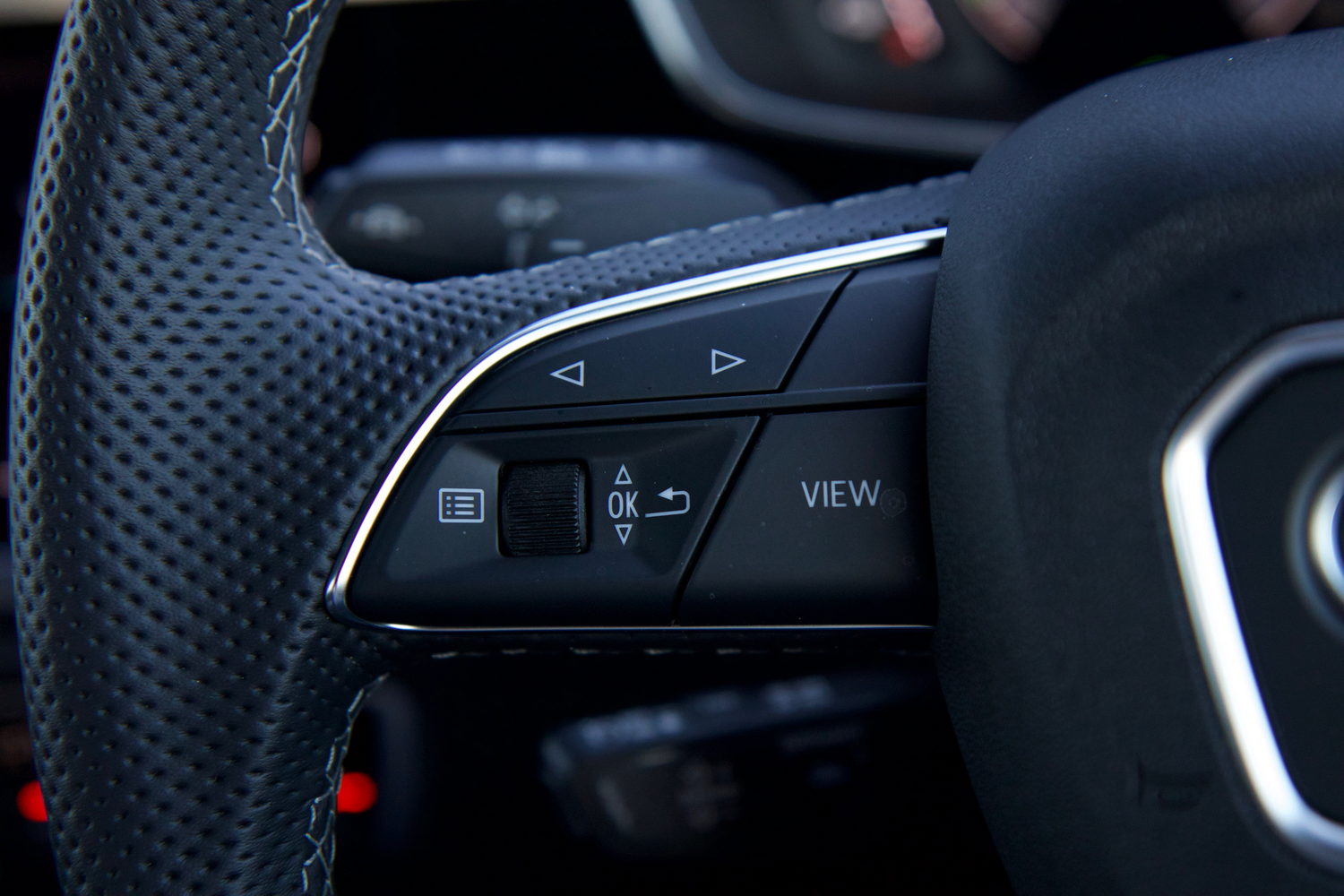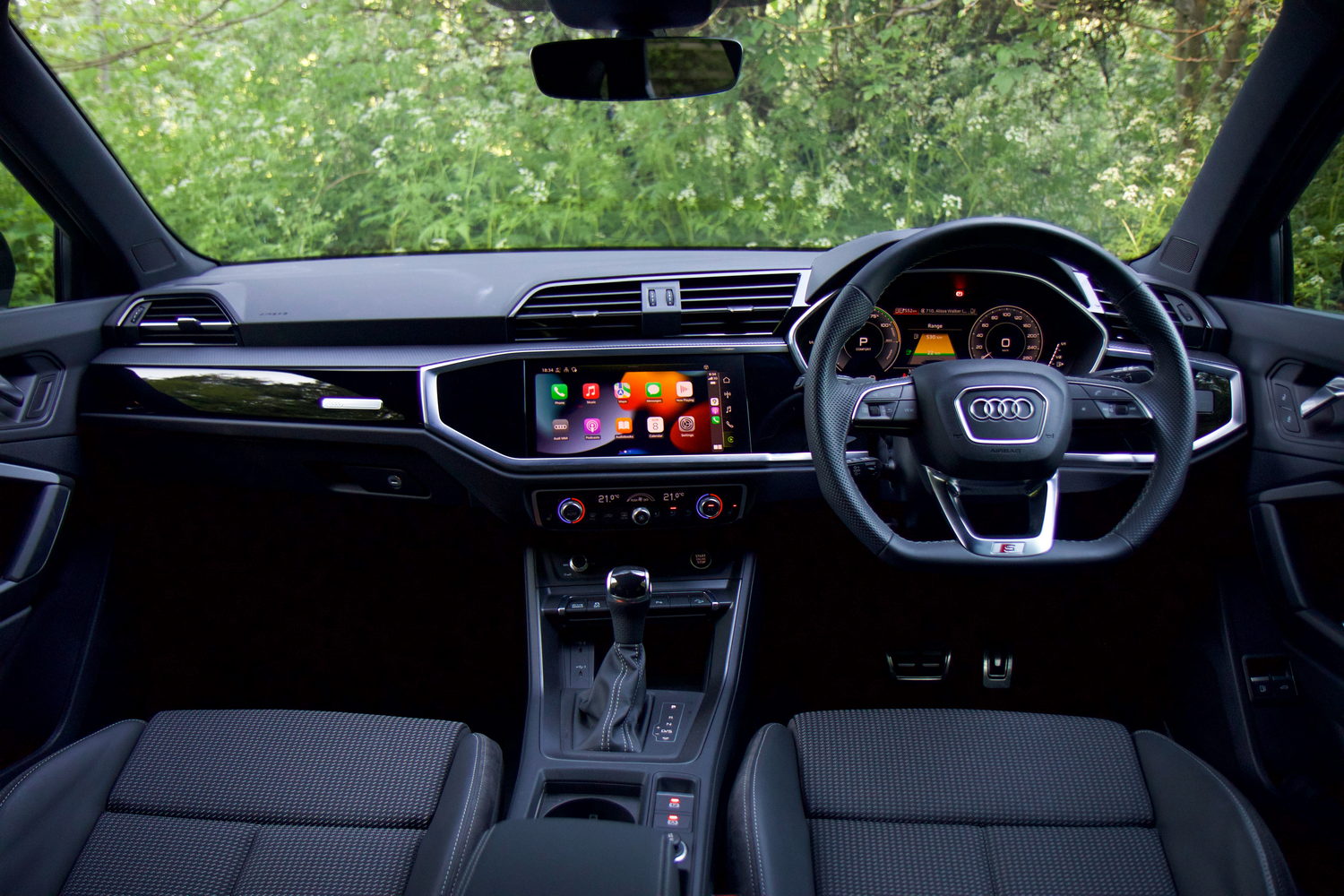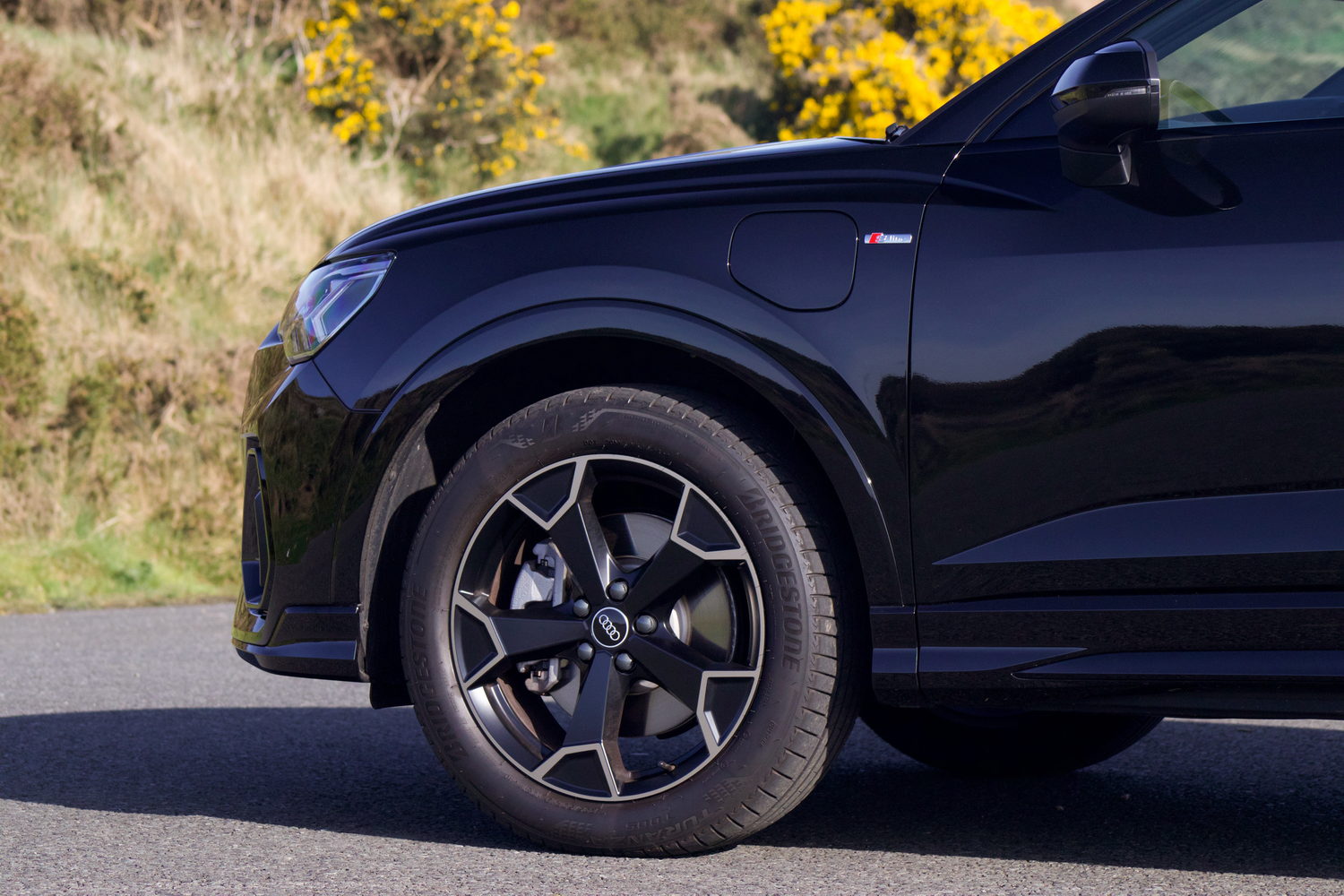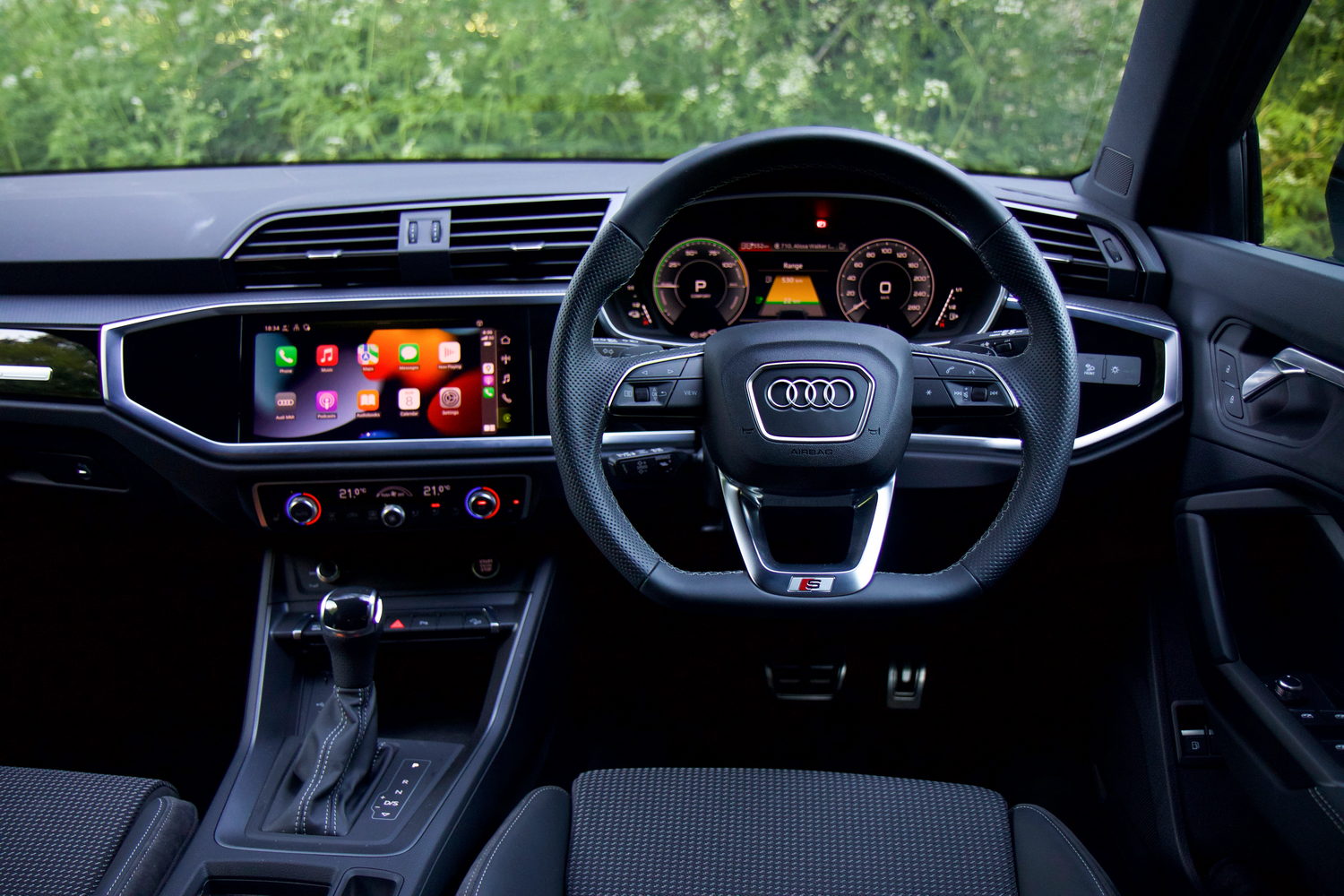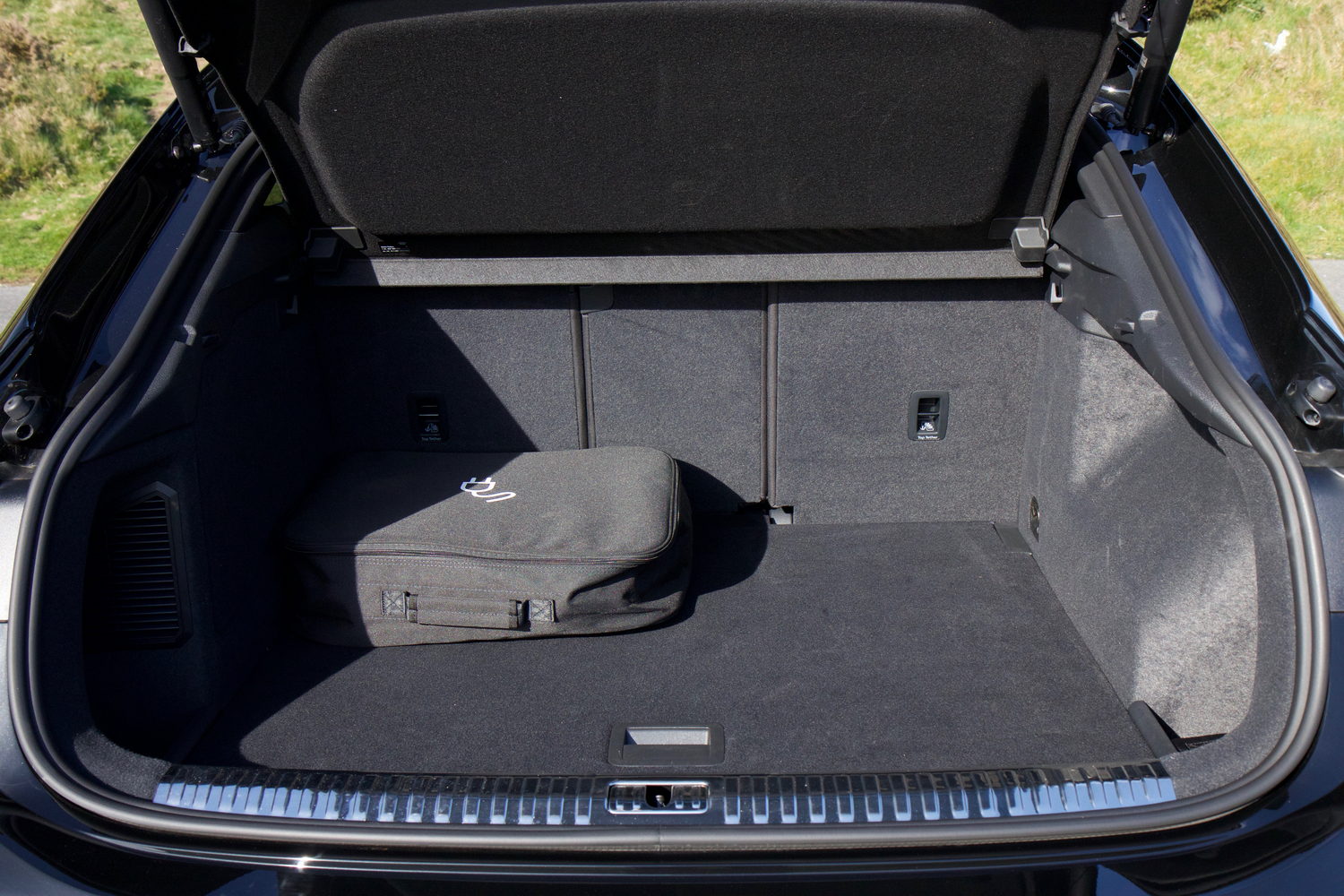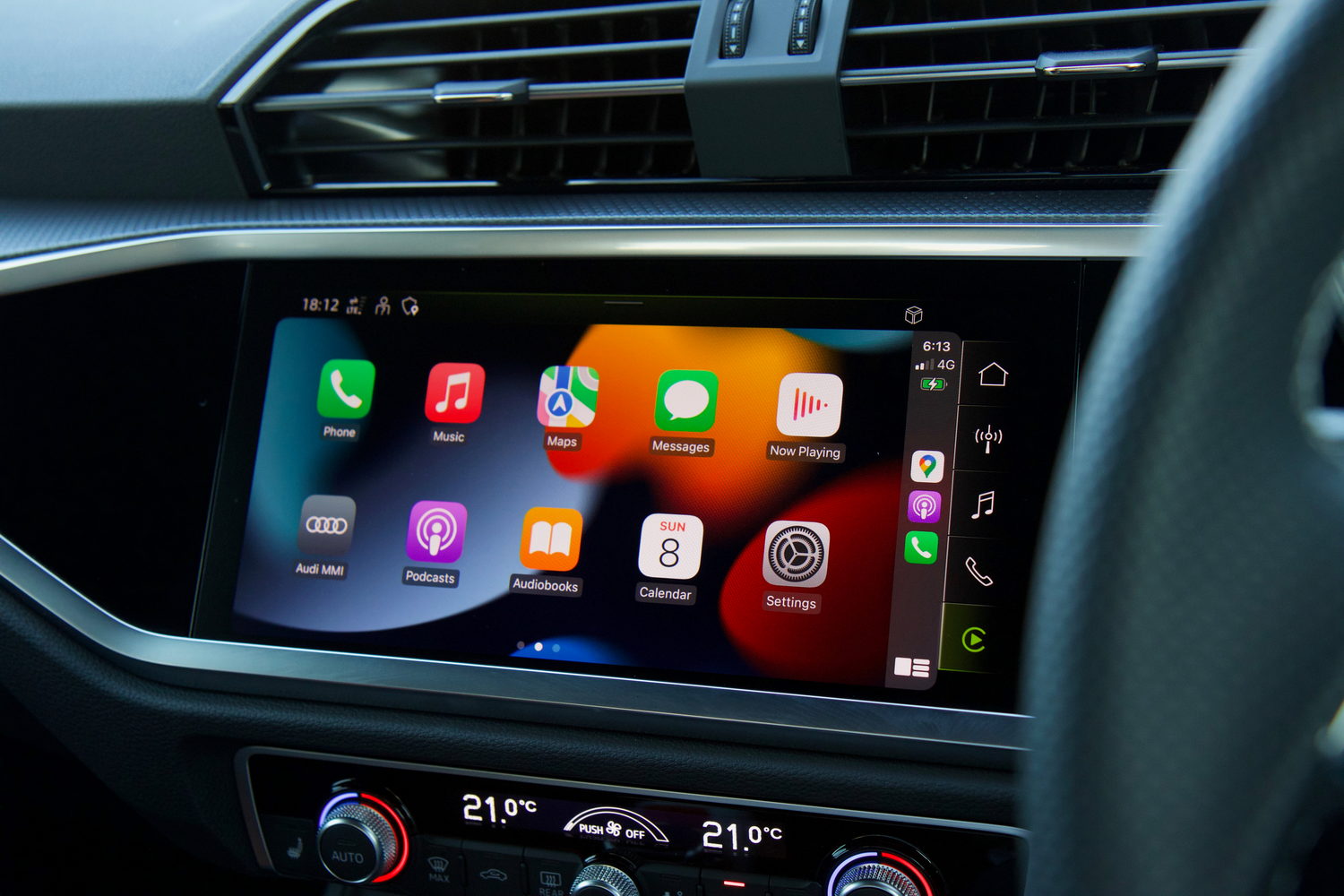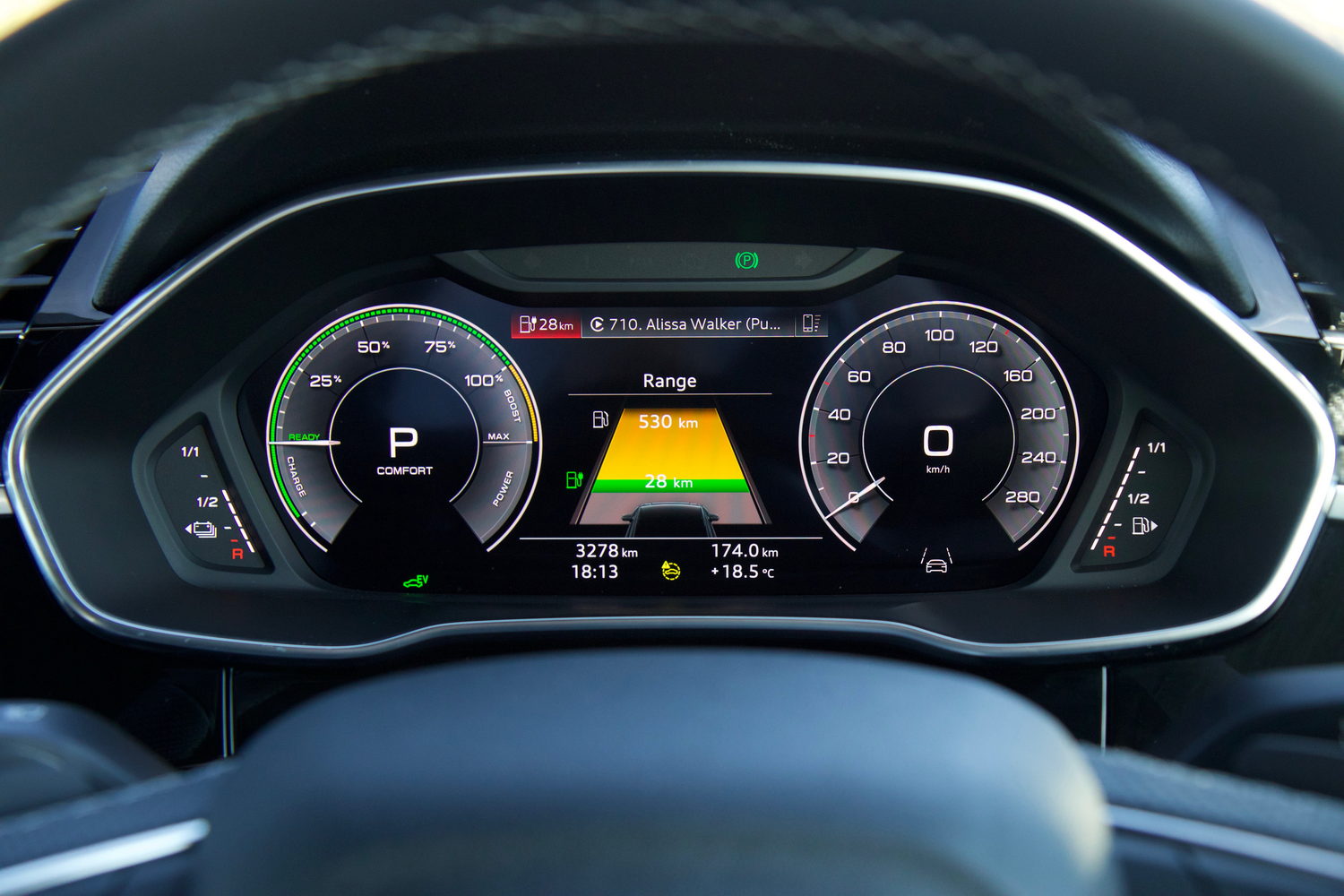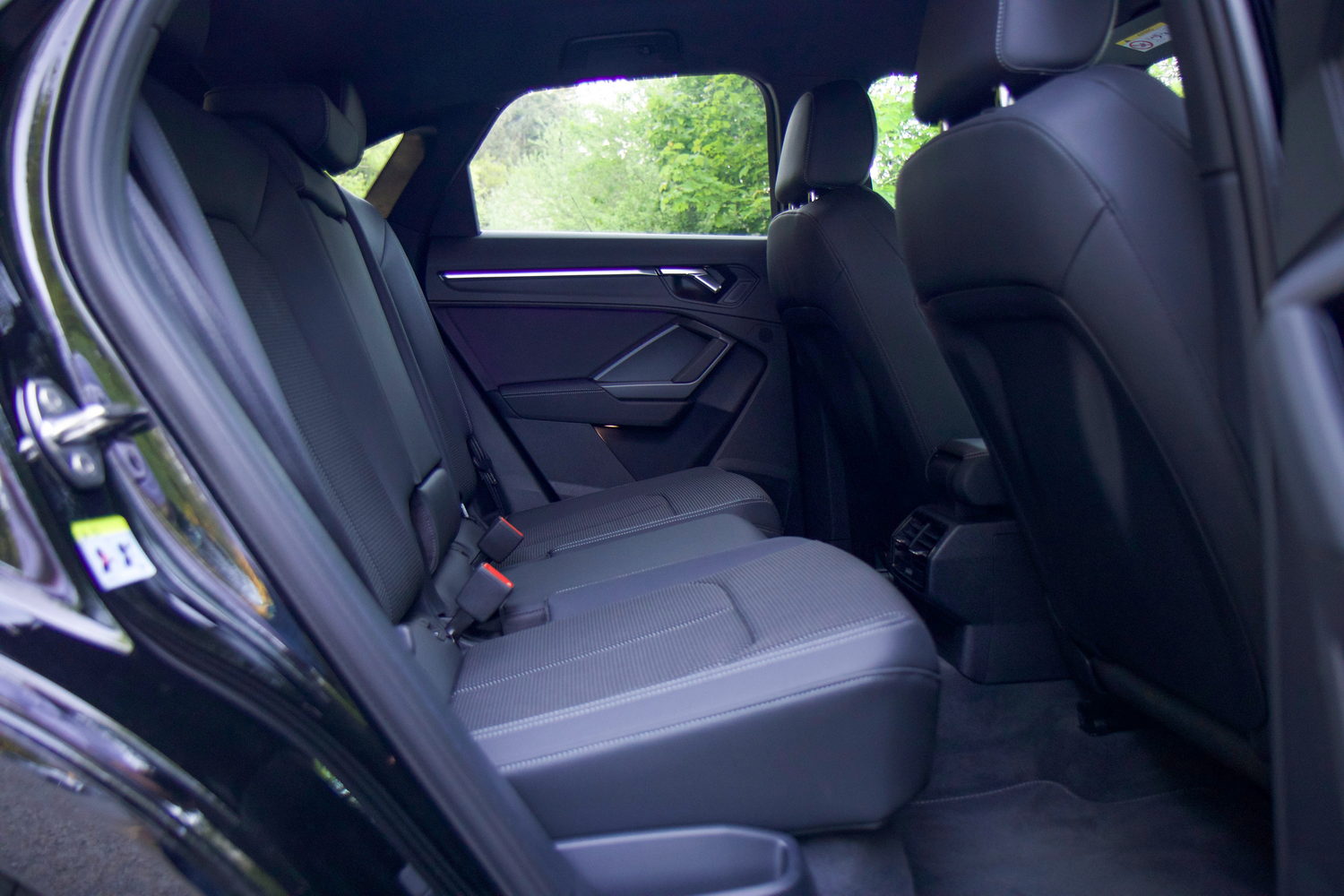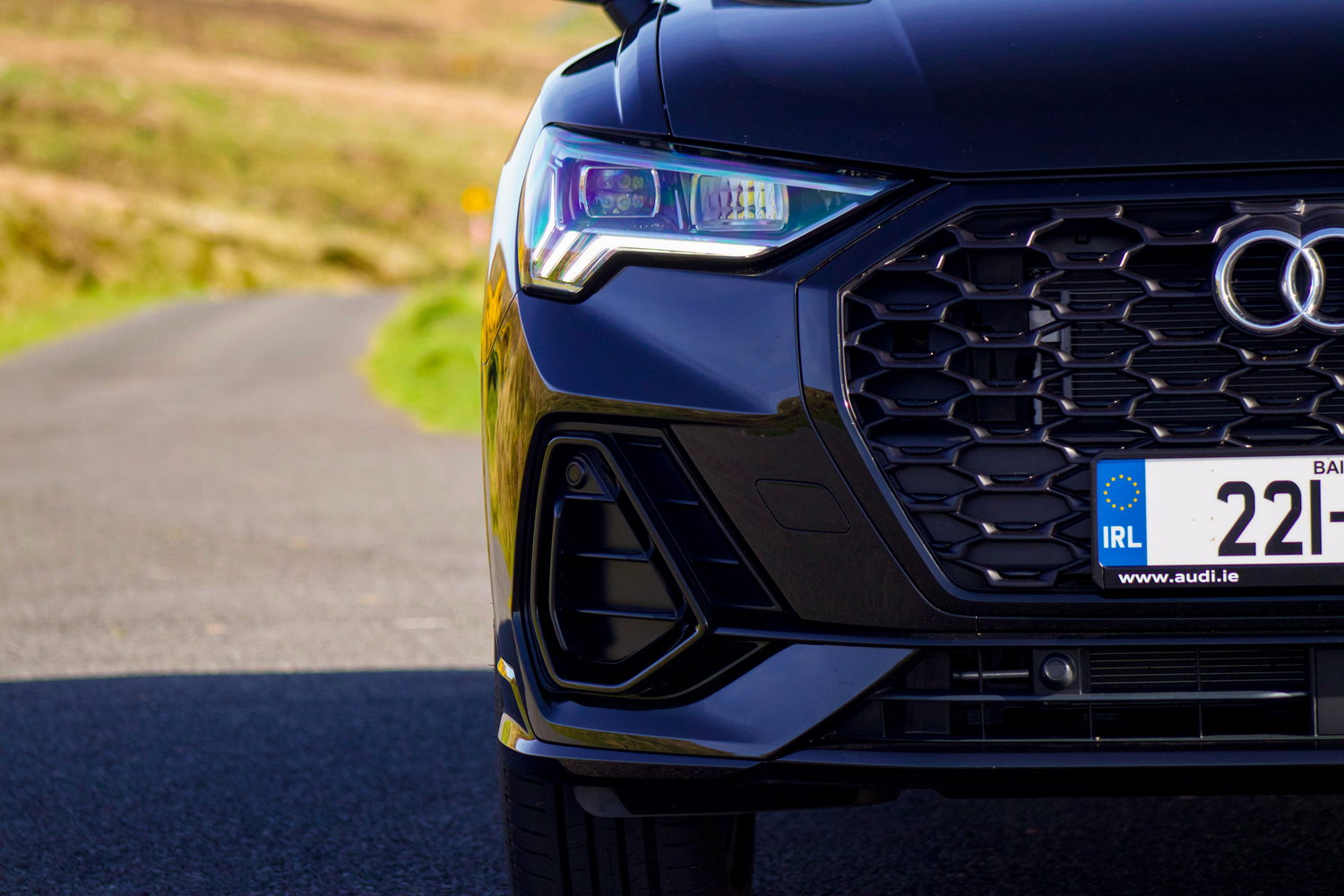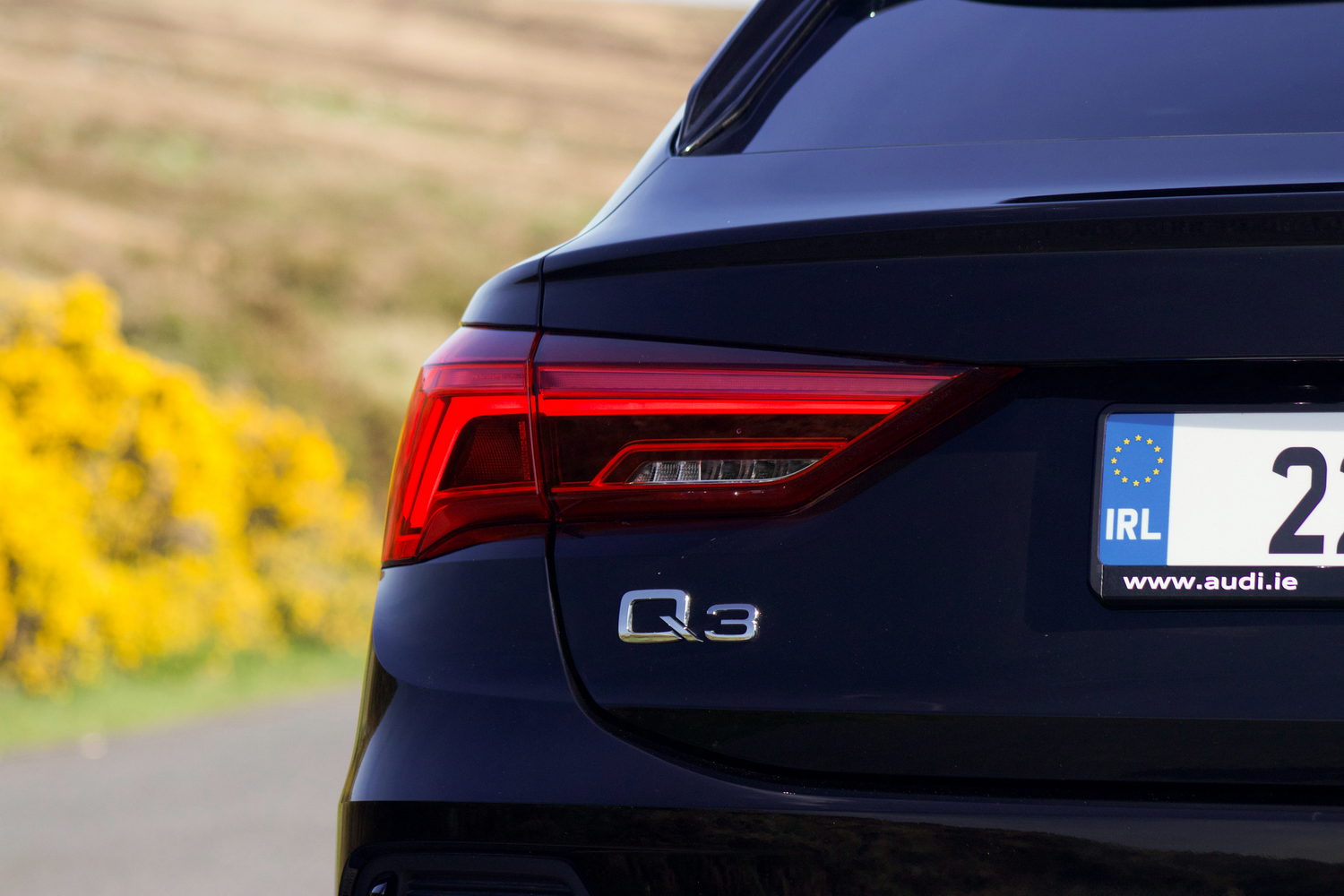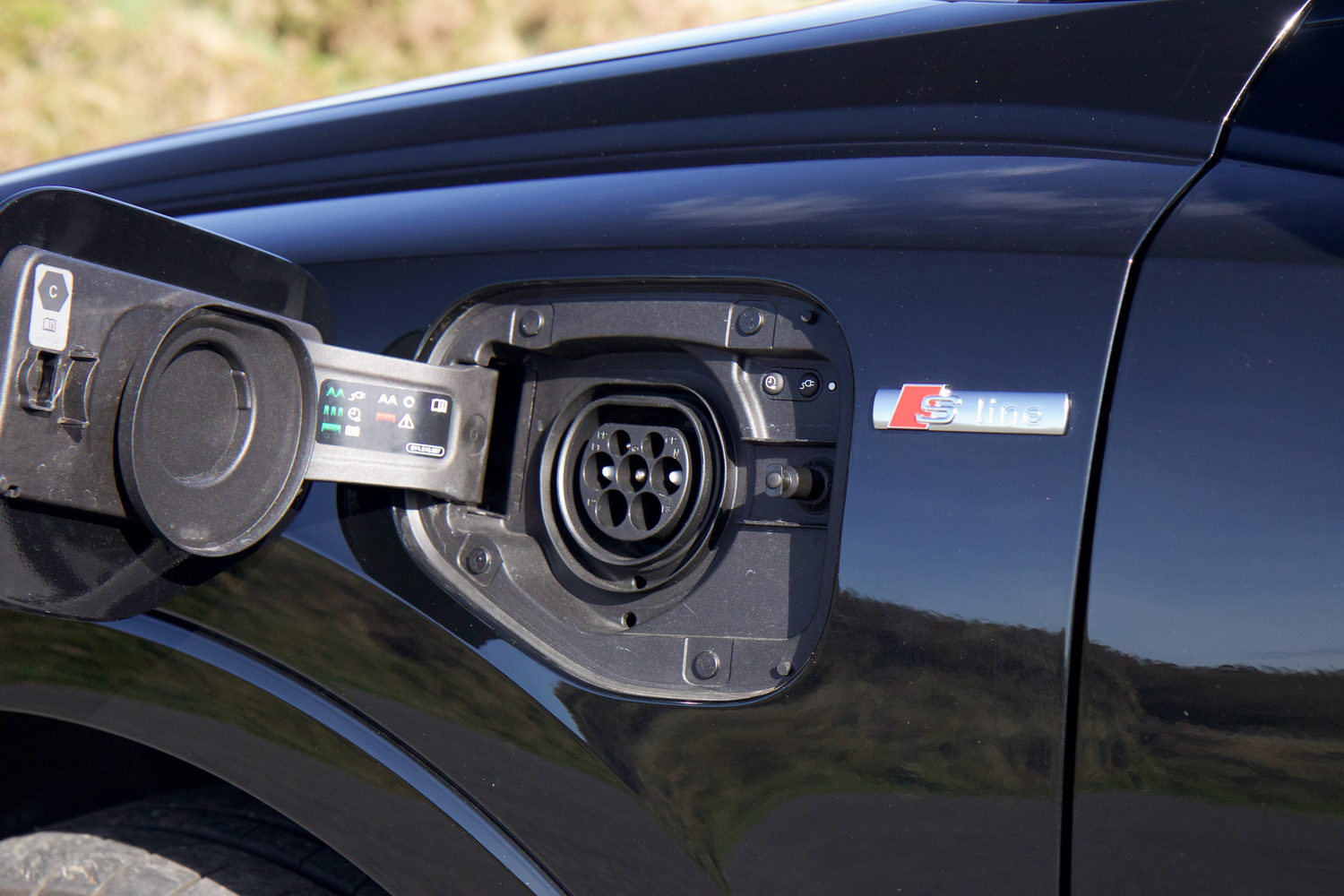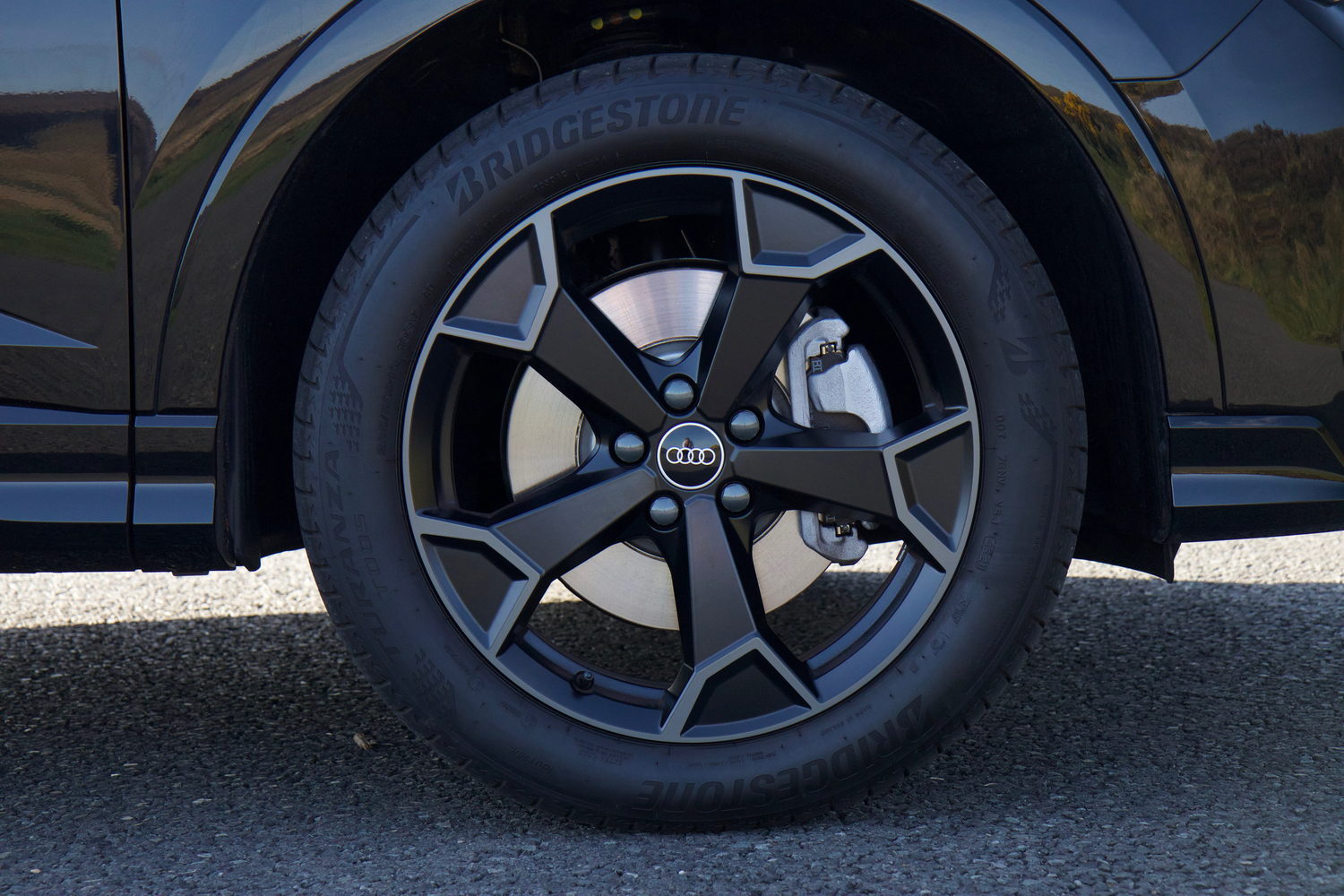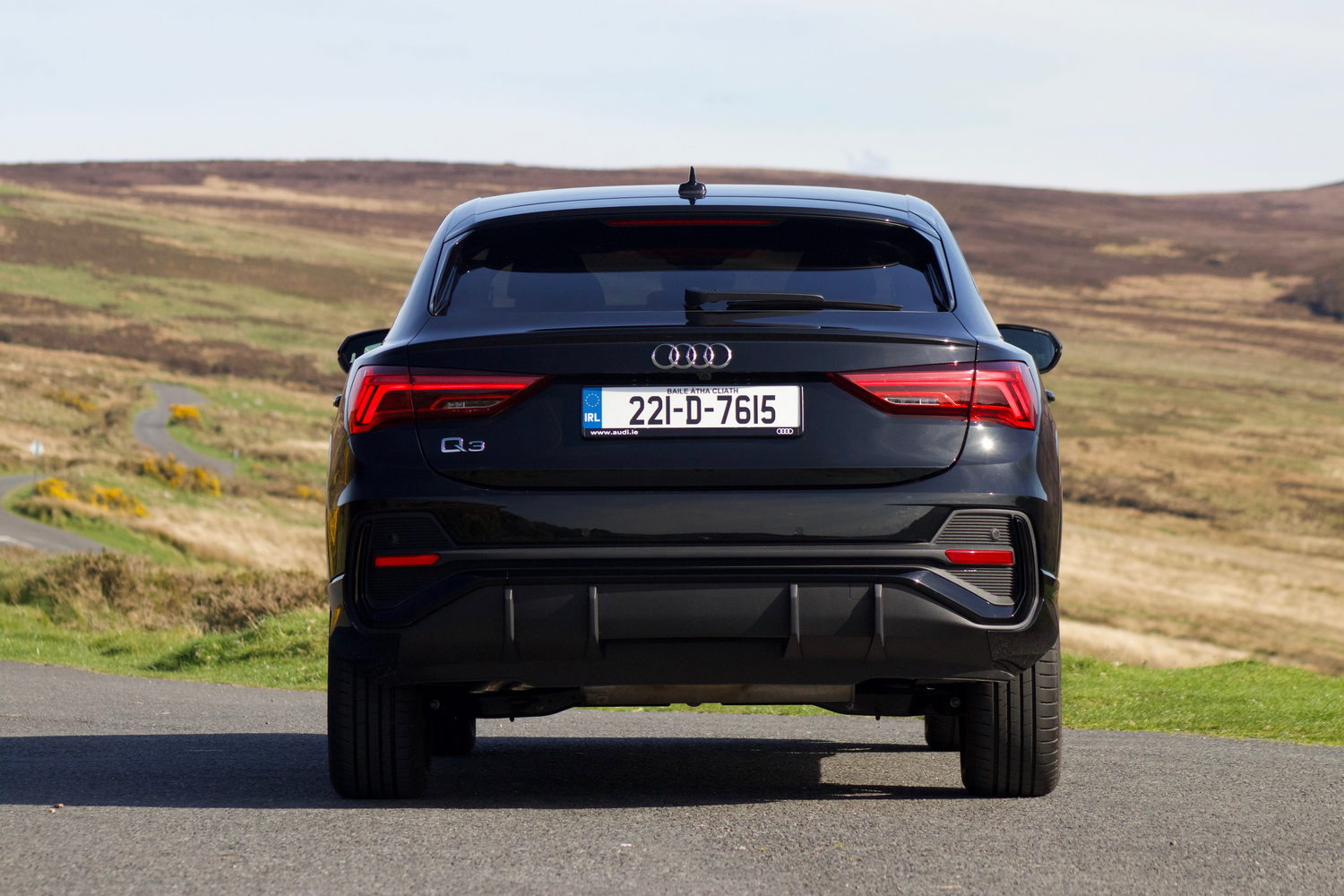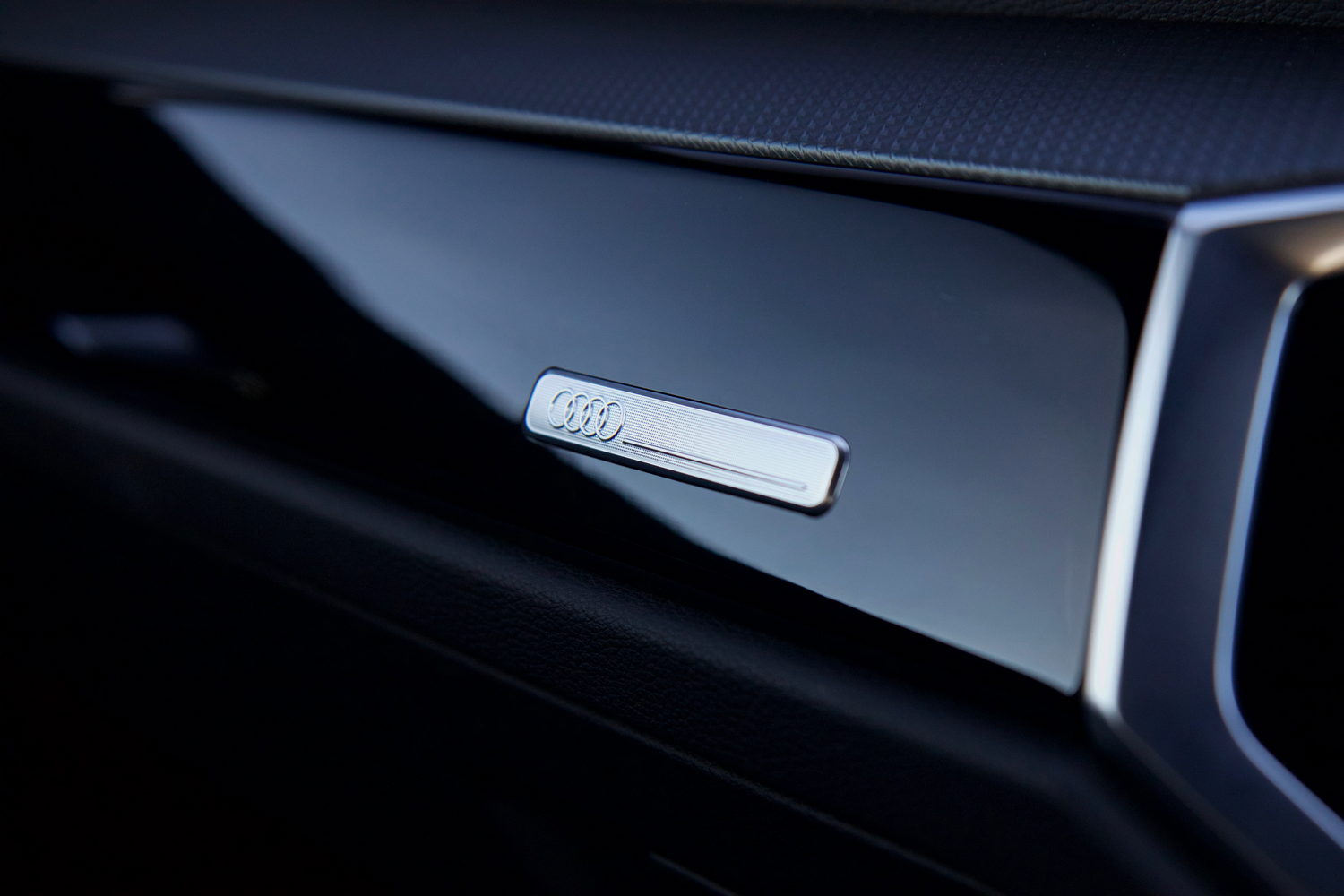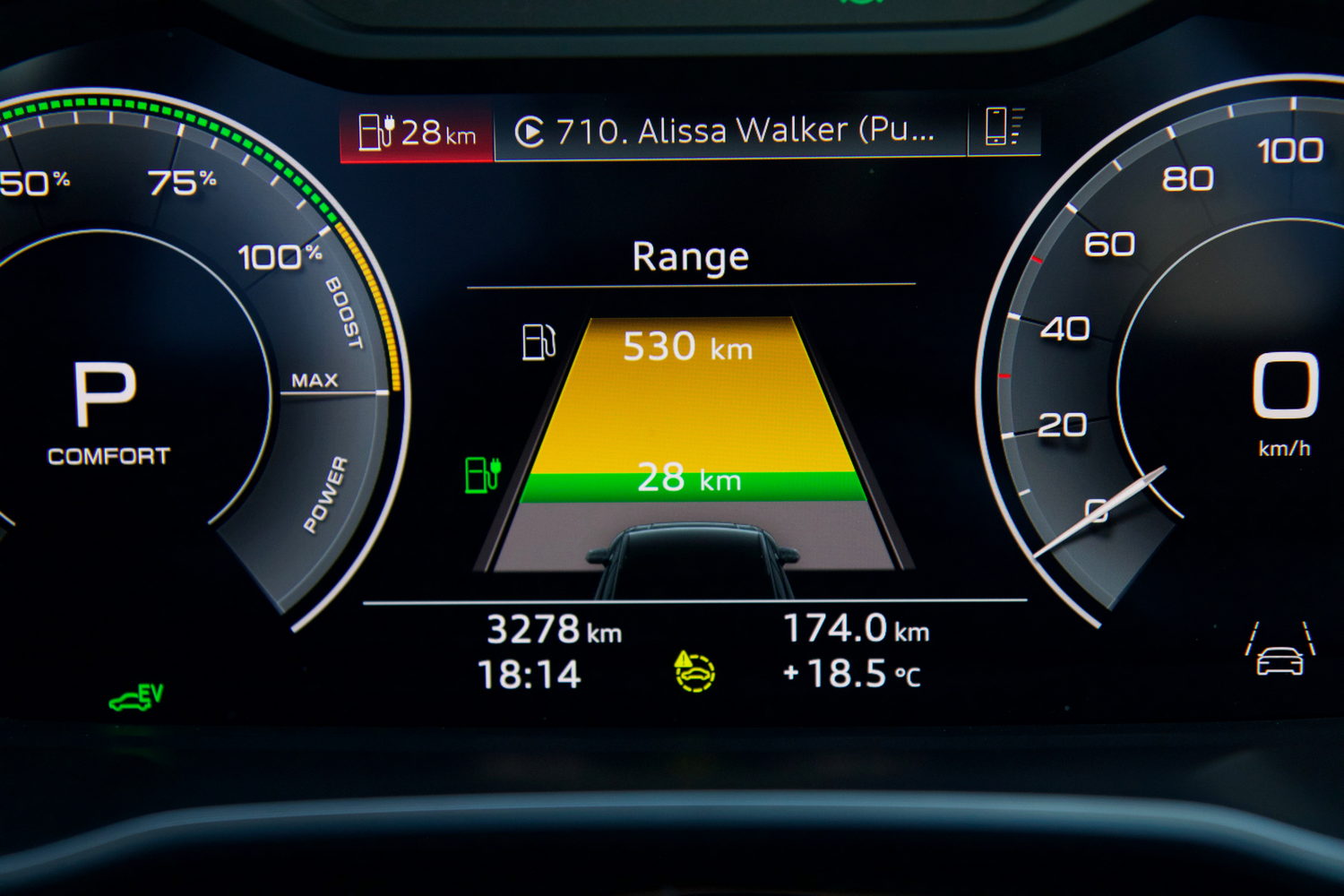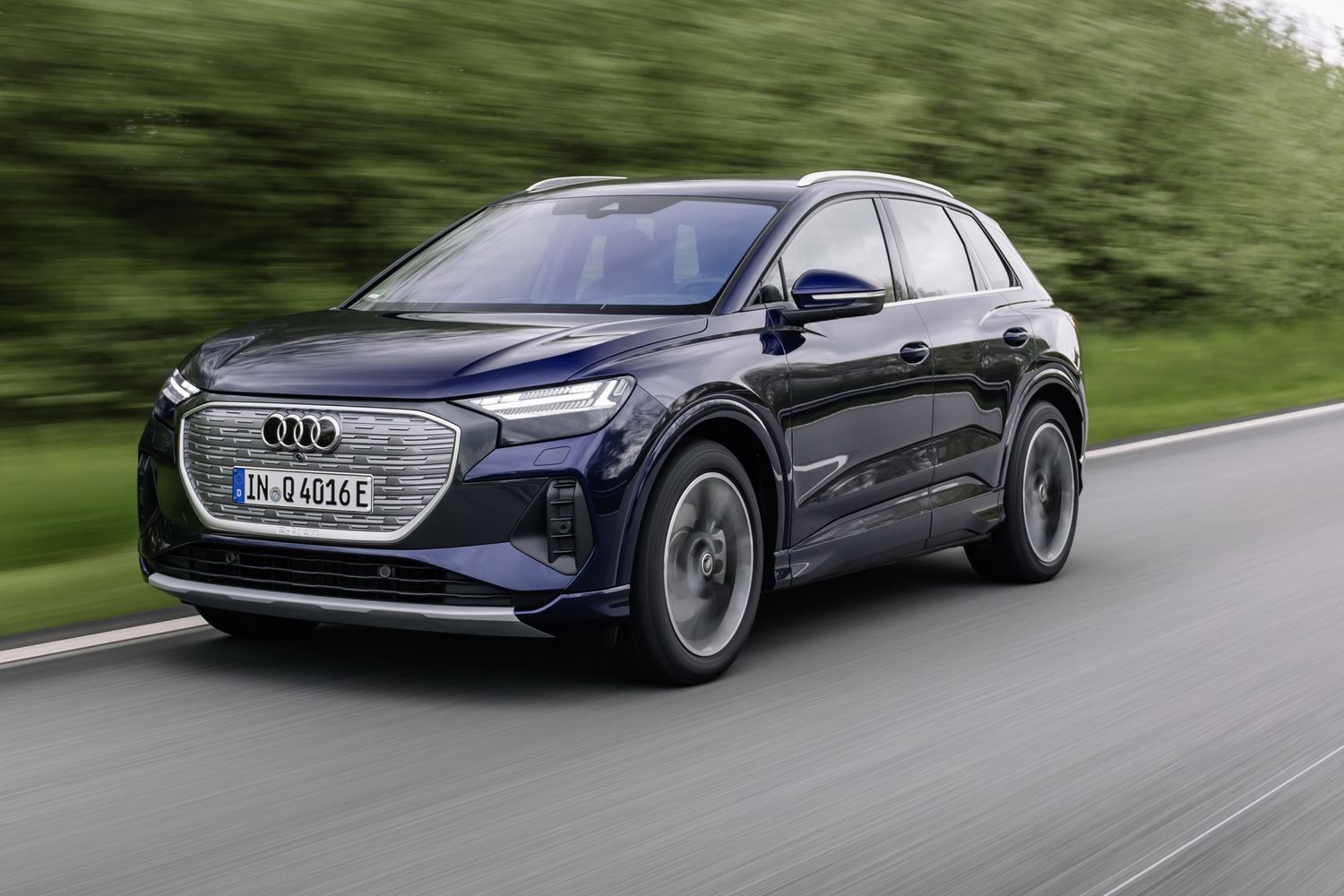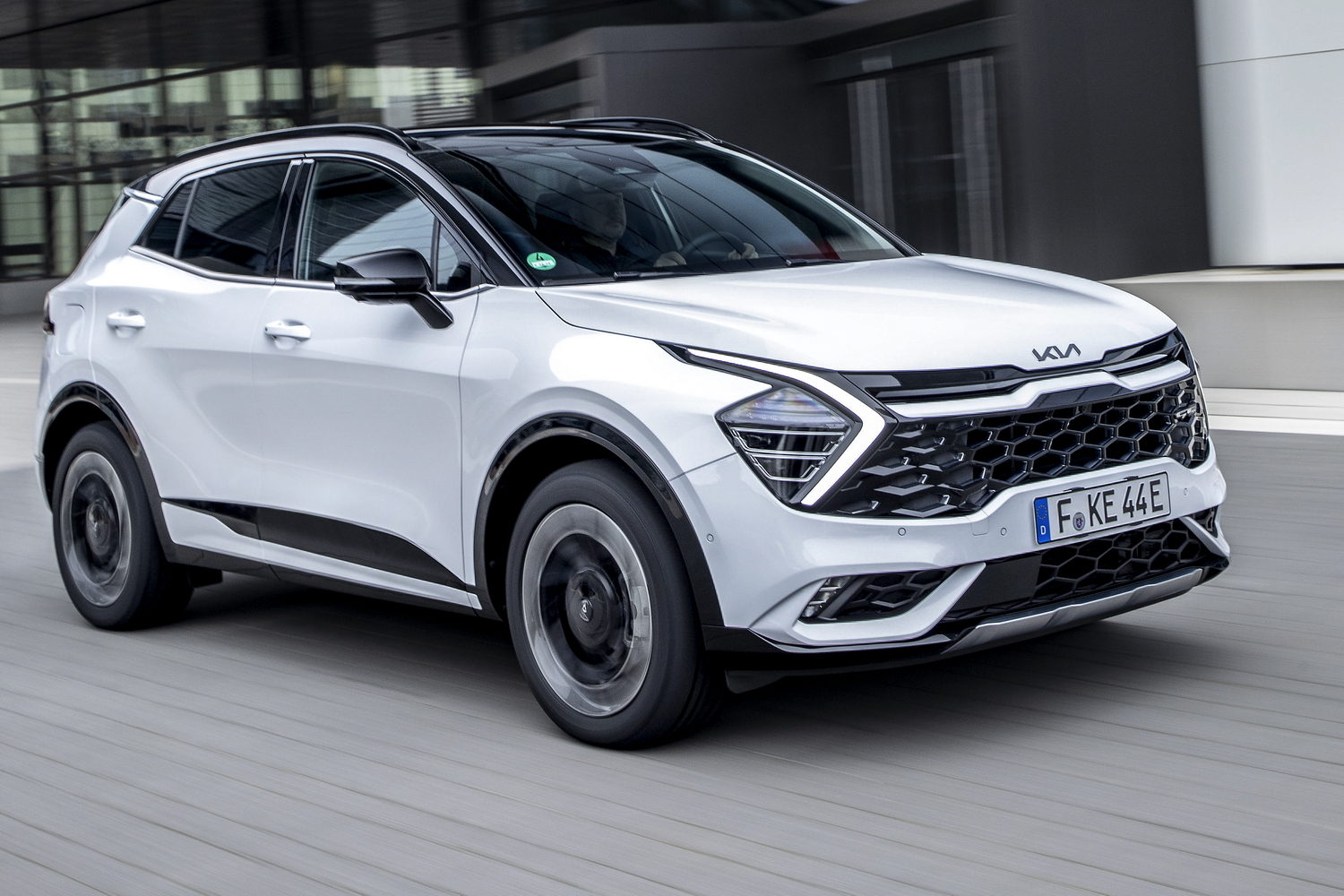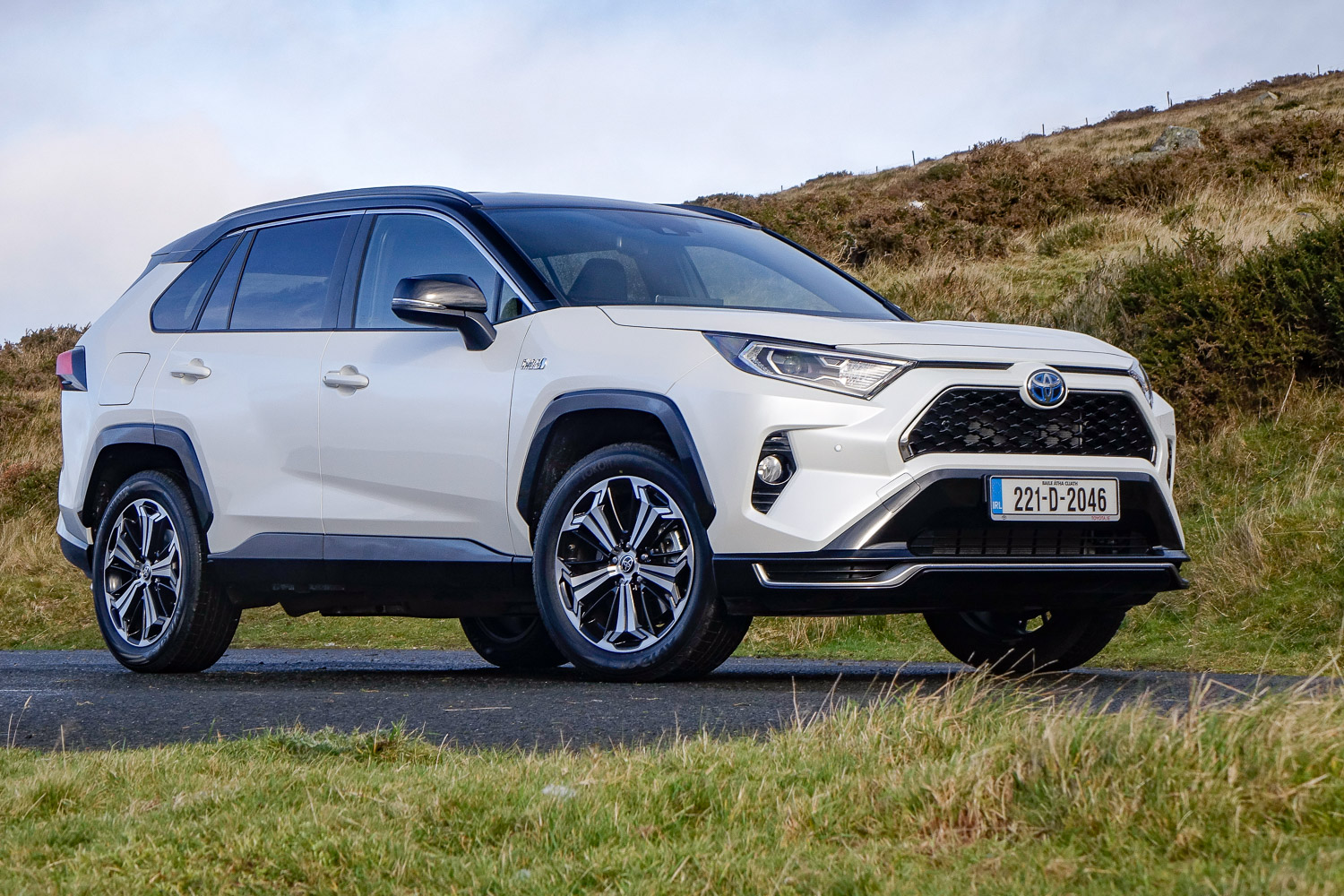Audi Q3 45 TFSI e overview
Audi's compact Q3 has been much-liked and much-bought since this current model was introduced in 2018. It marked a significant improvement in cabin space, quality and driver appeal compared to the previous, first-generation, Q3 and Audi has since expanded the line-up by introducing plug-in hybrid versions. This 'TFSI e' model uses the familiar Volkswagen Group PHEV setup of a 150hp 1.4-litre petrol engine backed up by an 85kW electric motor and a 13kWh battery pack (that's the gross capacity - the net useable capacity is 10.4kWh).
The Q3 finds itself up against a plethora of rival plug-in hybrid SUVs from both premium brands and mass-market marques, not to mention internal competition from fellow Volkswagen Group products. Has it done enough to stay ahead of the pack? And can it compete with ever-improving fully-electric models?
The Audi Q3 TFSI e model range
Audi places the plug-in hybrid TFSI e slightly off on its own, outside and adjacent to the rest of the Q3 line-up with its petrol and diesel engines. The starting price for a 45 TFSI e model, in SE spec and using the more upright Q3 body style, is €48,160 (a regular petrol-engined Q3 starts at €43,420). For that, you get a six-speed dual-clutch automatic gearbox, 18-inch alloy wheels, LED headlamps, 'PreSense' collision warning and autonomous braking, dual-zone climate control, Audi Smartphone interface, hill hold and descent control, a 10.25-inch 'Virtual Cockpit' digital instrument panel and an electric tailgate.
For €53,220 you can upgrade that to sportier S line spec, which comes with 17-inch alloy wheels, an S line body kit, upgraded LED headlamps with scrolling rear indicators, sports front seats, brushed aluminium cabin trim, sportier suspension, Audi Connect navigation and LED interior lighting.
Sportback models, which get a more sharply-angled tailgate, designed to give the Q3 a frisson of coupe-esque styling, get the same specifications but cost €50,095 in SE form, or €55,160 in S line guise. Our test car was an S line Sportback, which had been loaded up with €7,699 worth of optional extras, including adaptive cruise control, an upgraded 12.3-inch digital instrument panel, a 'Black' styling pack, a flat-bottom steering wheel with paddle-shifters, heated front seats, privacy glass, a rear-view camera and 19-inch alloy wheels (which in themselves accounted for a whopping €3,419 of the total add-ons).
All models have the same CO2 figures of between 38- and 45g/km, meaning that both Q3 and Q3 Sportback TFSI e models cost just €140 a year in motor tax.
On a PCP plan, Audi currently offers a Q3 150hp 1.5-litre petrol, in SE spec, for €436 per month, assuming a €14,000 deposit and a €20,000 final payment. Check out the Audi Ireland website for the most up-to-date offers.
The Audi Q3 Sportback interior
The Q3 and the Audi A3 hatchback and saloon share common underpinnings (the ubiquitous Volkswagen Group MQB platform), but the Q3 was designed before the A3, and it shows inside. The cabin, although pleasantly styled and sensibly laid out, lacks the sense of occasion that you get in the A3, which is a bit of a pity.
It's not that the Q3 has a poor cabin or anything, but it does arguably have less of a sense of occasion about it than some rivals from much more humble brands, and I'm especially thinking of the Kia Sportage here.
Our specced-up S line car looked every inch the moody Teutonic premium model, however, thanks to lots of brushed aluminium, lots of jet-black, high-quality plastic and heavy on the red mood lighting. The big 12.3-inch digital instruments are still among the best in the business, and they have a depth of clarity to their graphics that not all rivals can match. Ditto the 10.25-inch touchscreen in the centre of the dashboard. Thanks to the fact that the Q3 retains physical controls for the heating and air conditioning, it's pretty easy to find your way around, while the haptic feedback that makes the on-screen icons feel a little like proper buttons also helps. Actually, those physical air conditioning controls deserve mention not merely for being easy to use, but also for having such a high-quality feel. Twiddle the rotary controller for the temperature settings and it feels as if you're opening the locks on a teeny-tiny safe.
The three-spoke wheel feels great to hold, although the little rotary buttons for stereo volume and menu selections can be a touch fiddly to use. Down low on the centre console there's a rank of buttons that control the driving mode selection, traction control, hazard lights and so on. Beneath them there's a useful storage area that gets one of each type of USB socket and a wireless phone charging pad (the touchscreen includes wireless Apple CarPlay). Behind the gear selector, there are two large cupholders and a small storage tray that is handy for loose change.
You'll find more storage space under the front seat armrest. Those in the back seats get ample legroom and headroom, in spite of the lowered roofline. They also get a 12-volt socket, another pair of USB connectors, plus some low-set air vents.
Back up front, the upgraded sports seats in our S line model are well worth the extra spend on their own - they're spectacularly comfortable and the extension section for the cushion, which supports the backs of your legs, is especially welcome on long journeys.
The boot has lost some cargo volume relative to a standard Q3 and Q3 Sportback, thanks to having to leave space for the hybrid system's battery. Boot space falls from a very generous 530 litres to a paltry 380 litres for the TFSI e model. That's the same space as you get in a basic VW Golf hatchback, or for that matter an Audi A3.
The Audi Q3 Sportback 45 TFSI e driving experience
There's an inherent problem with most plug-in hybrids and it's weight. The Q3 Sportback TFSI e is carrying a 200kg penalty, relative to a petrol-engined model. Now, that's not an excessive amount considering that the battery gives you a decent 51km electric-only range, but it does mean that Audi's engineers have had to re-tune the Q3's suspension to manage the extra mass. In doing so, they've pretty well removed any of the standard Q3's sense of fun and agility. The Q3 Sportback TFSI e corners competently and relatively smoothly - yes, even on those optional 19-inch wheels - but you're never really going to enjoy driving it very much.
Compensation comes with the Q3's efficiency. That 51km official electric range is no lie - you should be able to get at least 40km on average, and 45km is possible if you're careful and if the outside temperature is in that sweet spot where it's warm enough not to need to heat the cabin, but not so hot that you have to crank up the air conditioning.
On longer runs, with a flat hybrid battery, the Q3 falls into the typical 6.0-6.5 litres per 100km fuel consumption band that we tend to see with most similarly sized plug-in hybrids. That's neither spectacularly good nor spectacularly bad, but it does mean that realistically you'll need to have off-street parking and a home charging point to make the most of the Q3 TFSI e (and, indeed, any plug-in hybrid car), which then does raise the question of whether you'd be better off spending similar cash on the all-electric, roomier, arguably more stylish Q4 e-tron instead.
Our verdict on the Audi Q3 Sportback TFSI e
The plug-in hybrid Audi Q3 feels a touch like a car that time has already passed by. It's not as versatile in terms of electric range nor long-haul fuel economy as some newer PHEV models, and within the Audi range it's priced at a similar level to the all-electric Q4 e-tron, which is just a much better car, hands-down. The Q3 remains handsome, pleasant to drive and with a very high-quality interior, so for those who aren't quite ready to go fully electric it does remain an interesting choice.
What do the rest of the team think?
Despite the reduced boot space, this plug-in hybrid version of the Audi Q3 has a lot to offer buyers. The main cabin is beautifully made and though people will align the car with the Audi A3 range, the Q3 is much more spacious in the rear seats. Audi is a little tight with equipment though, which is unforgiveable when there are so many great alternatives on the market. That probably won't matter to those that want an Audi on their driveway of course. Thankfully the Q3 is competent on the road, too, remaining comfortable and quiet, even in the sporty looking S line specification.
Shane O' Donoghue - Editor

